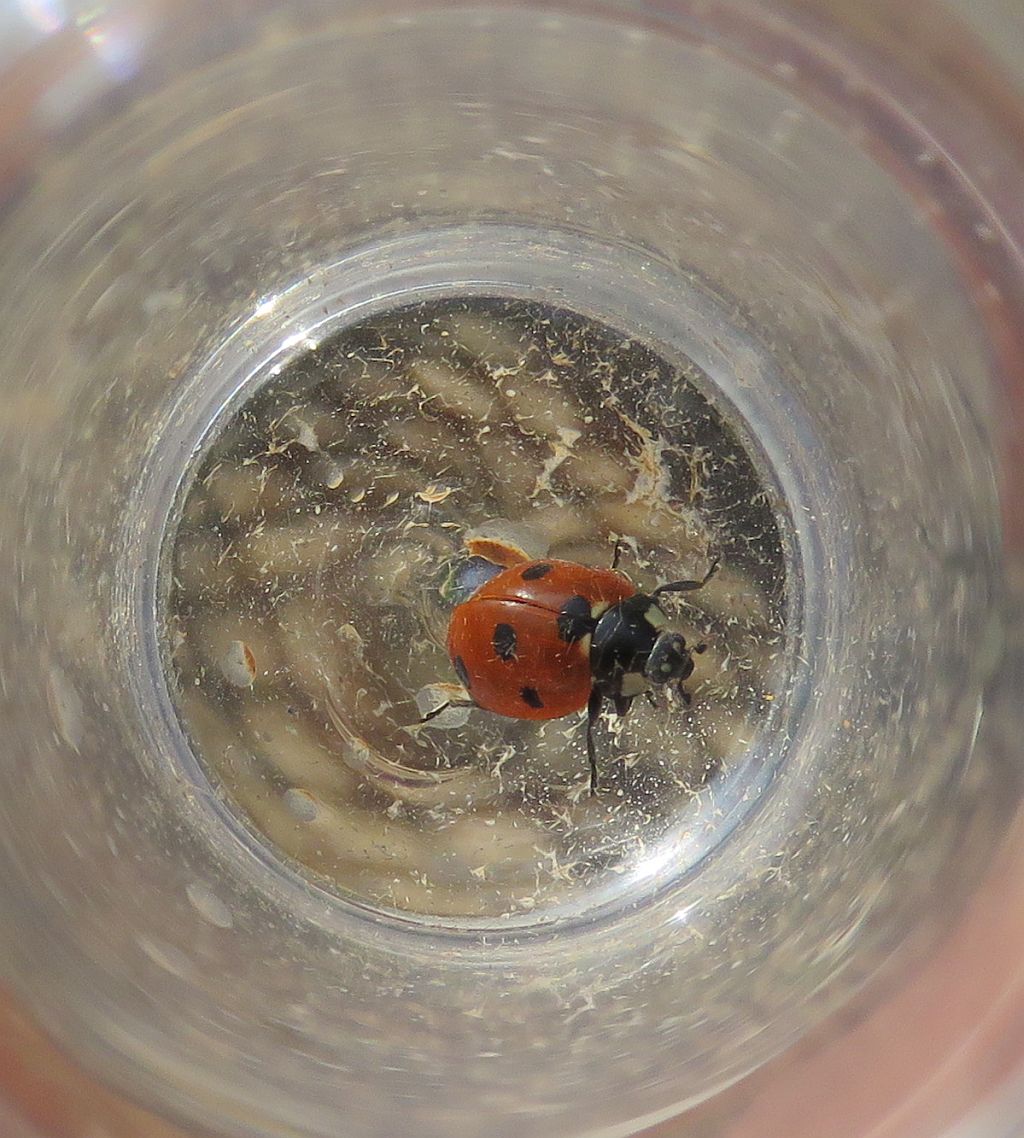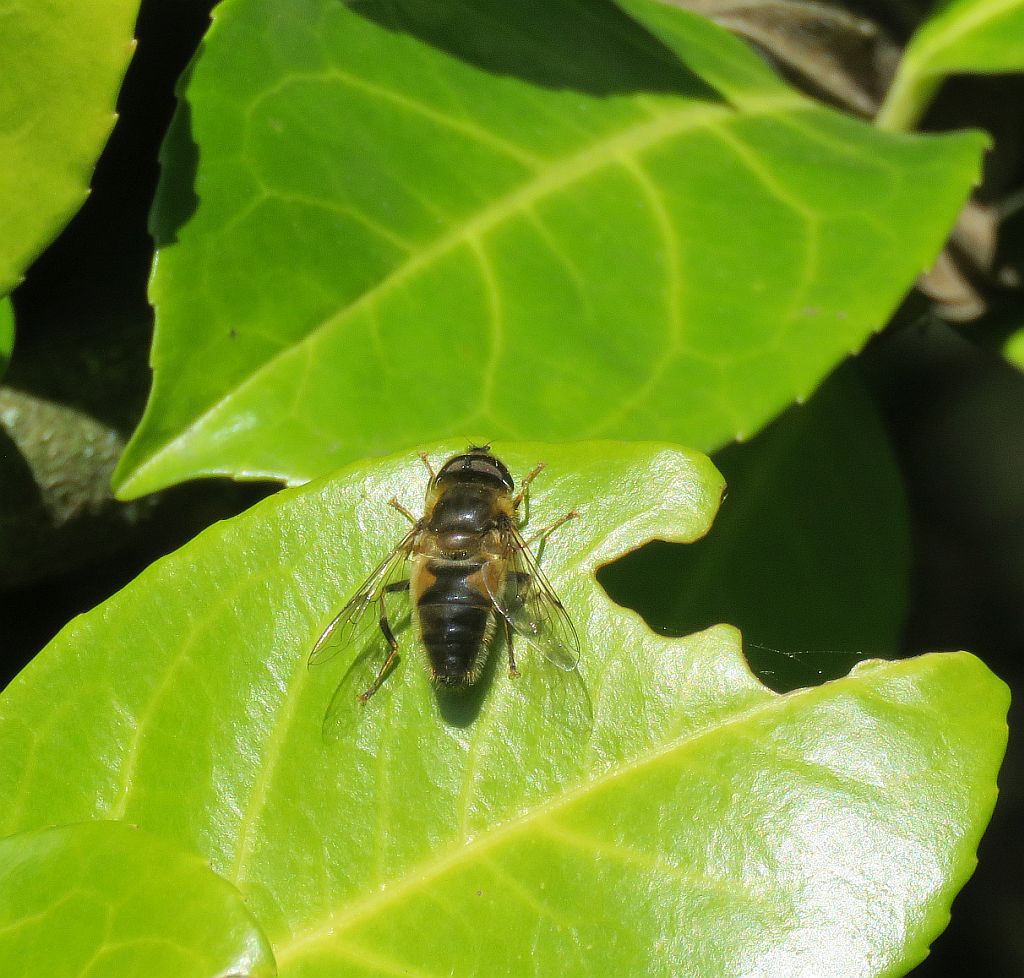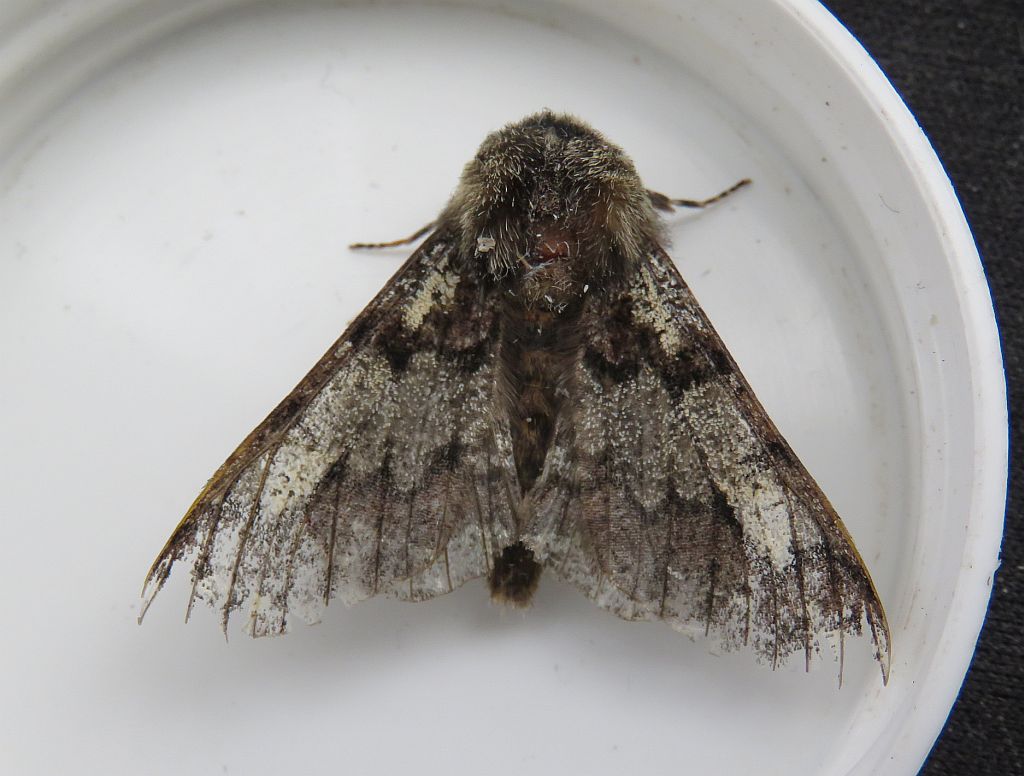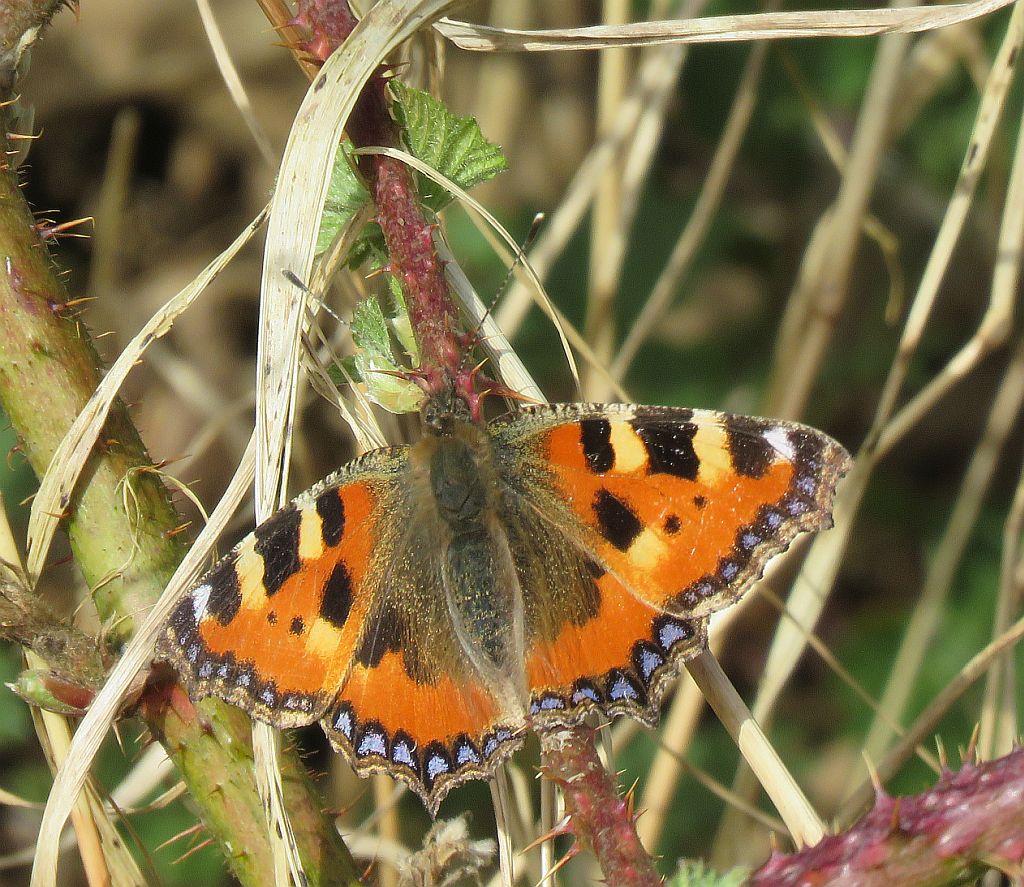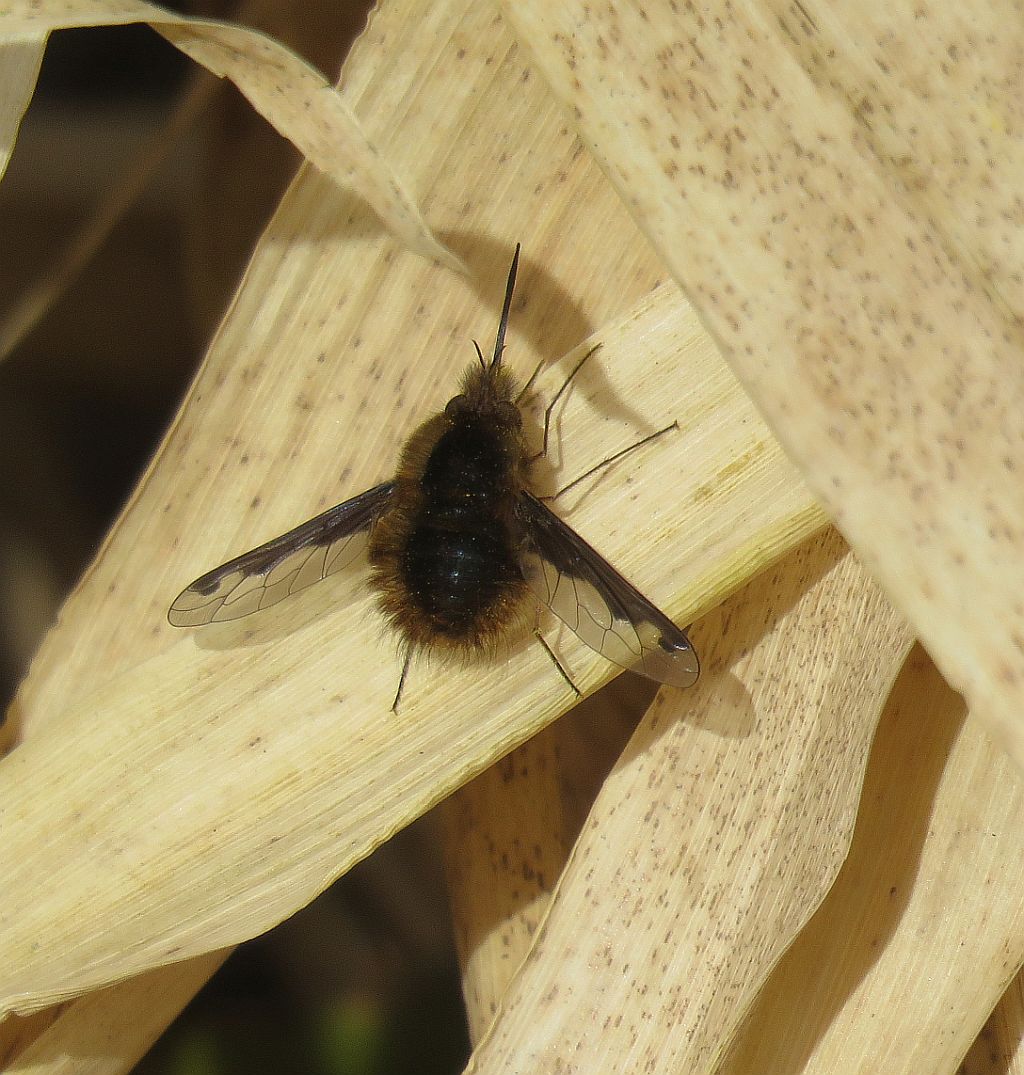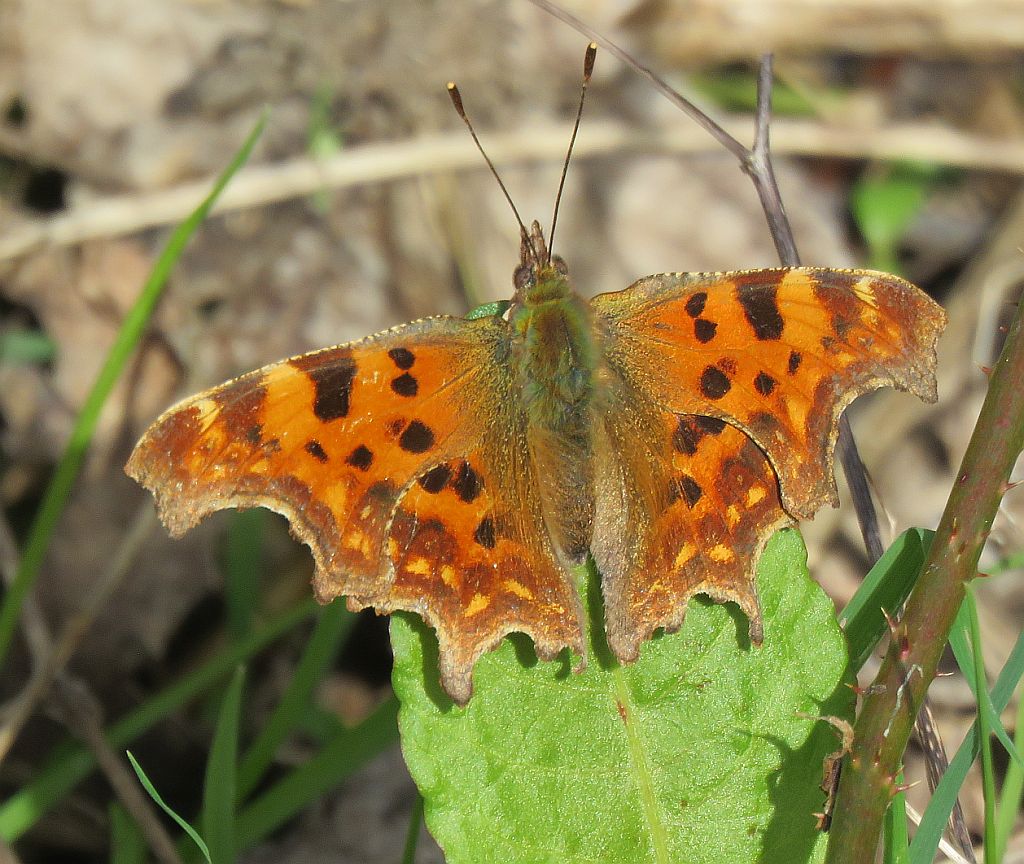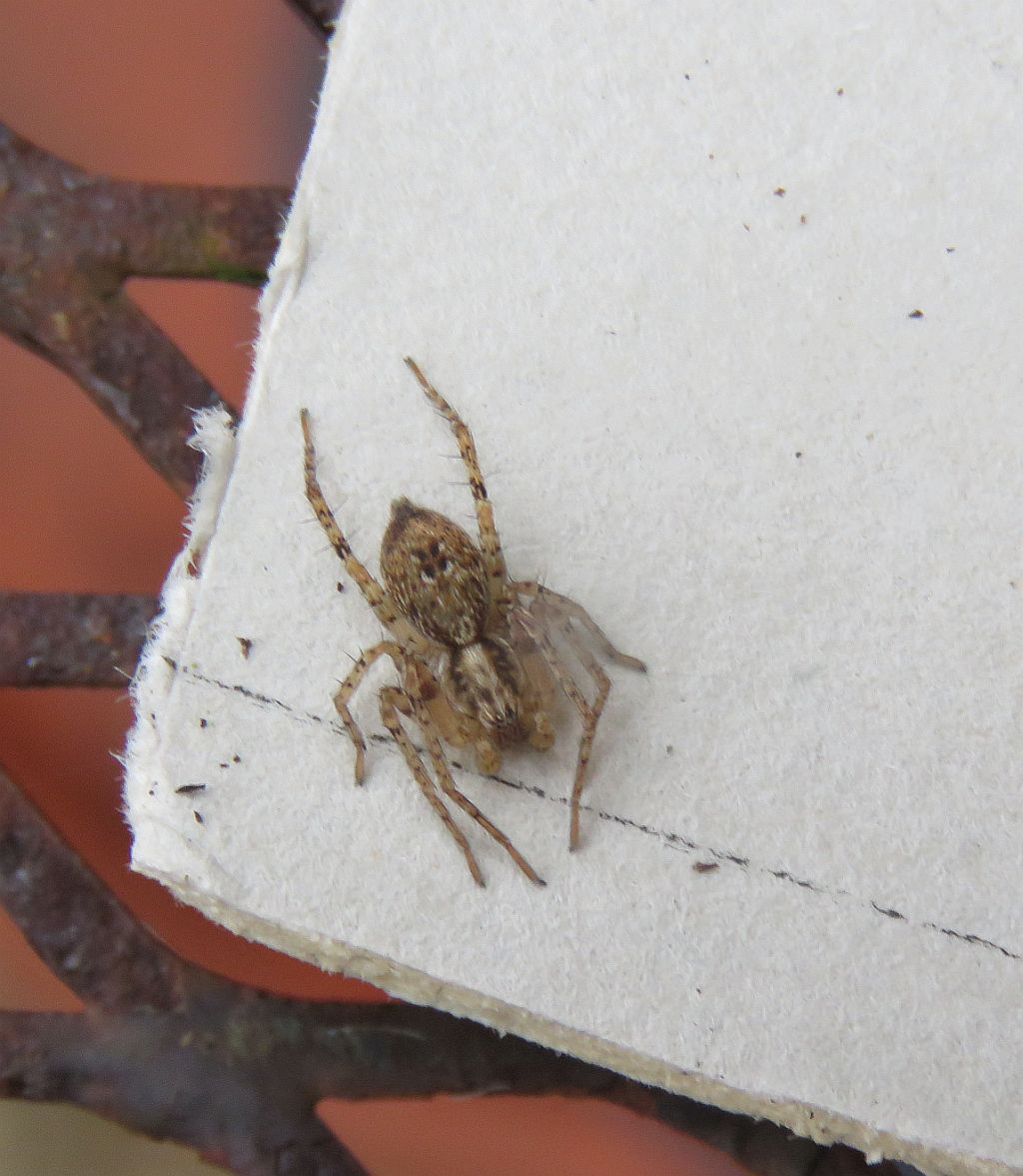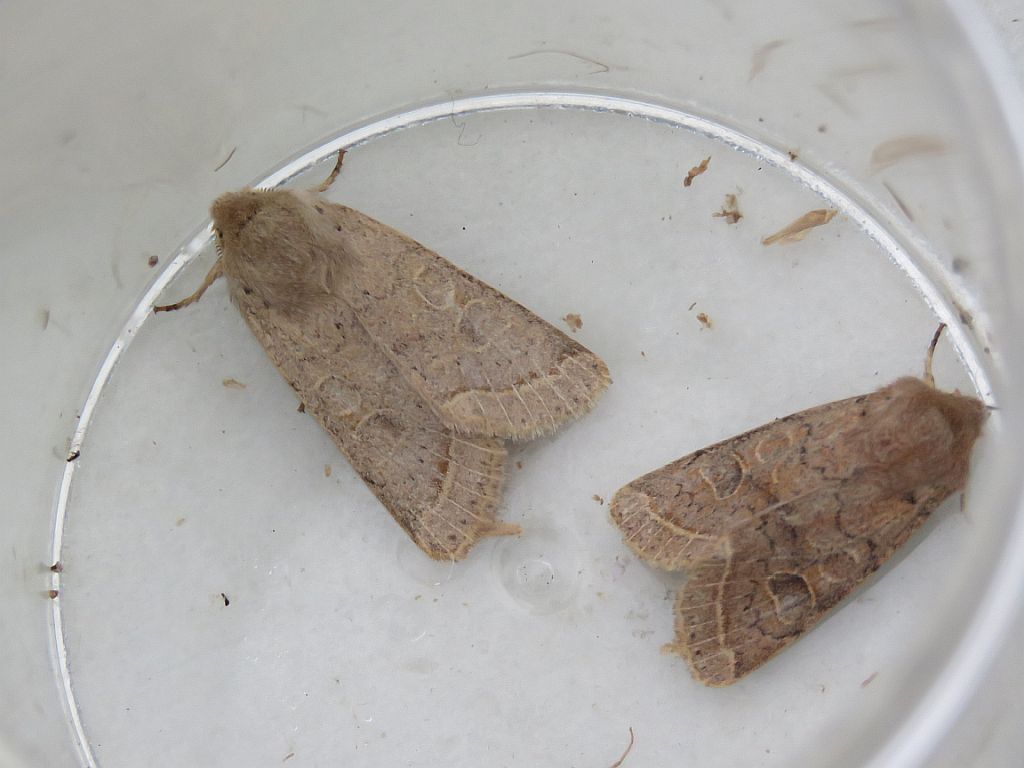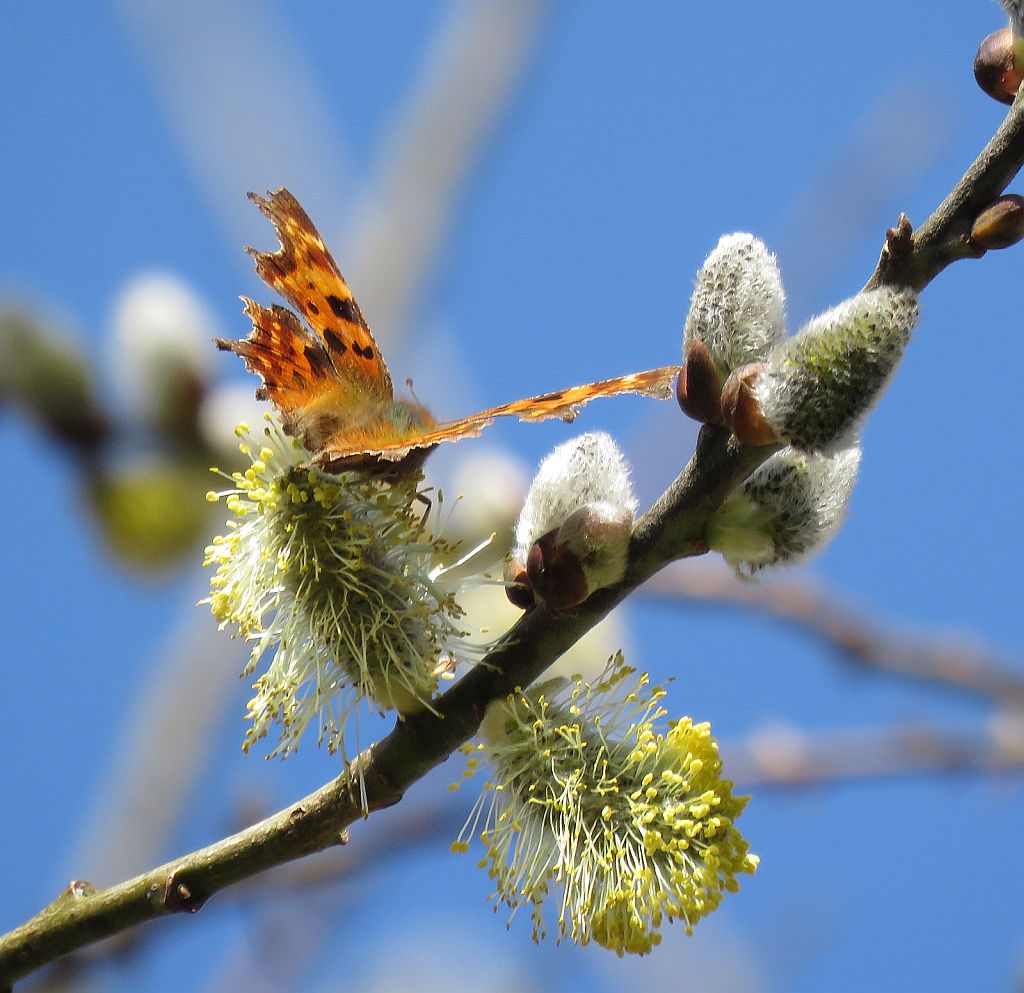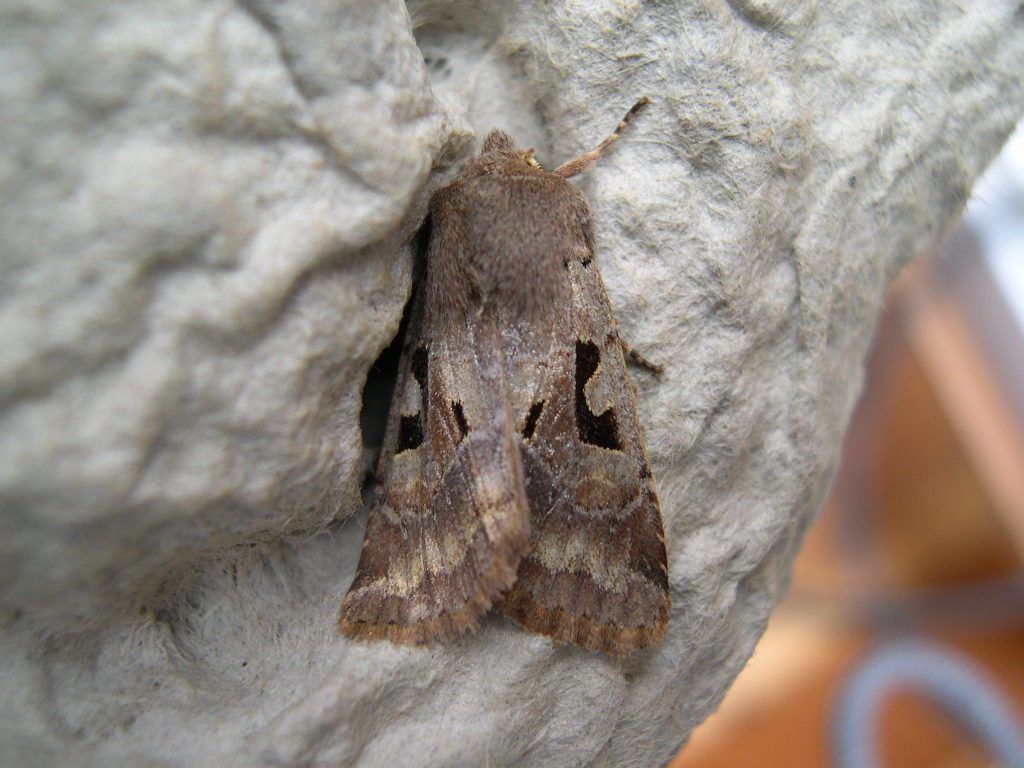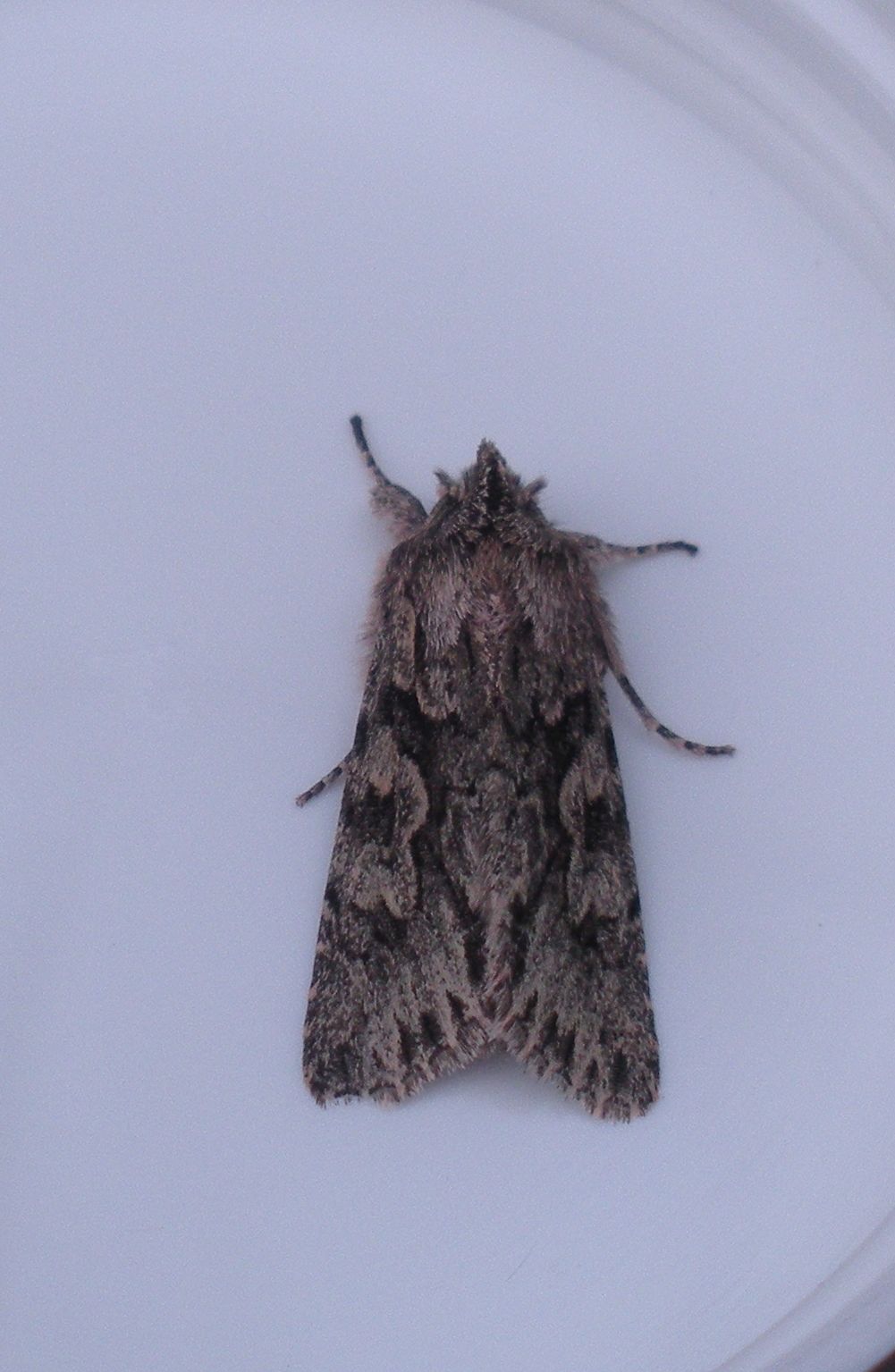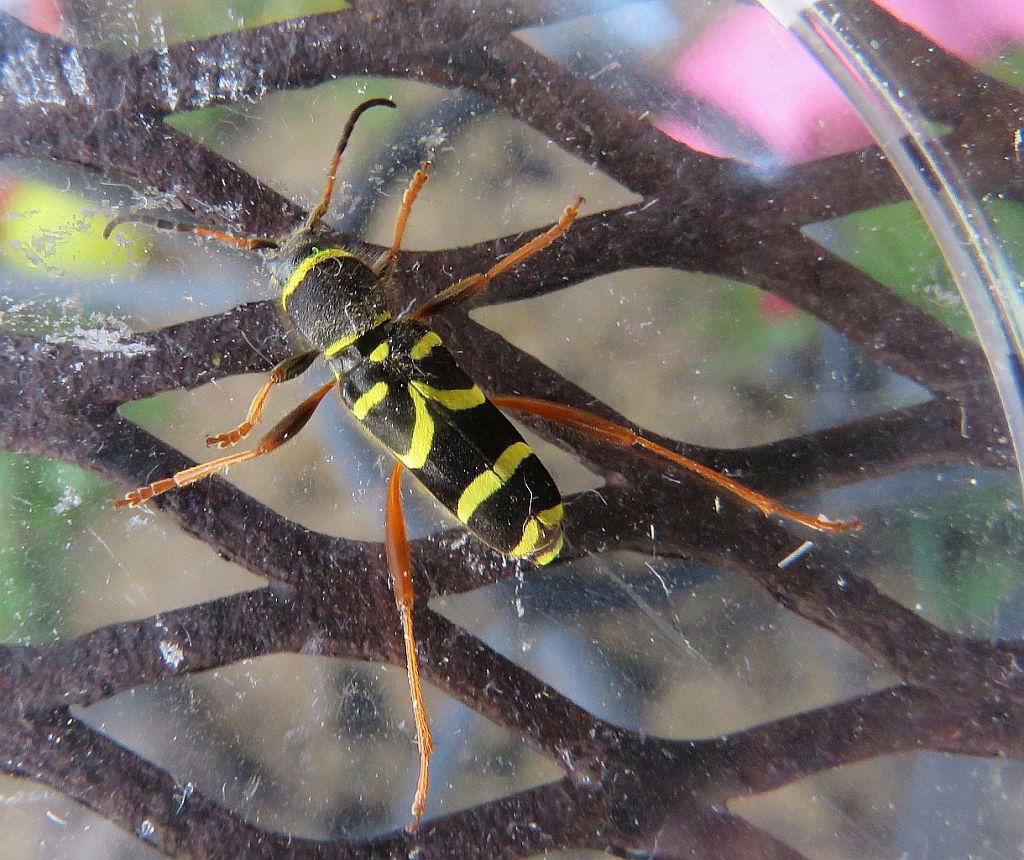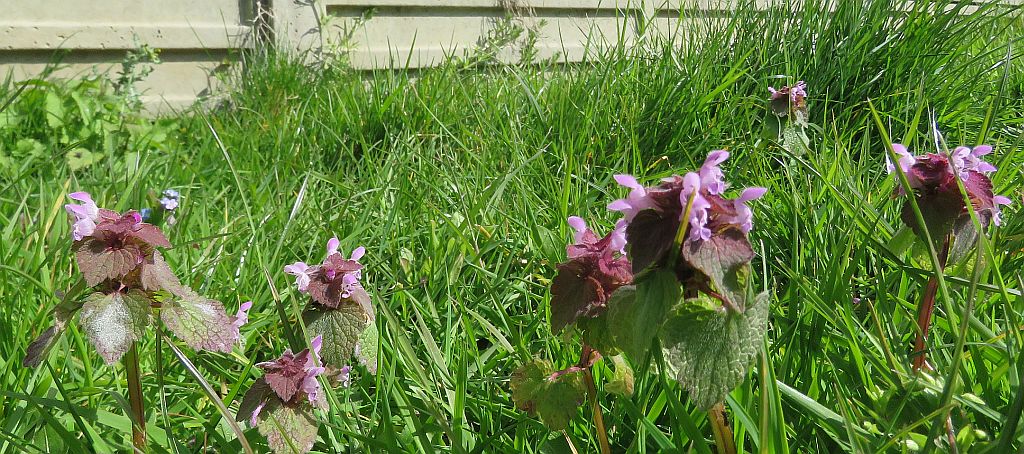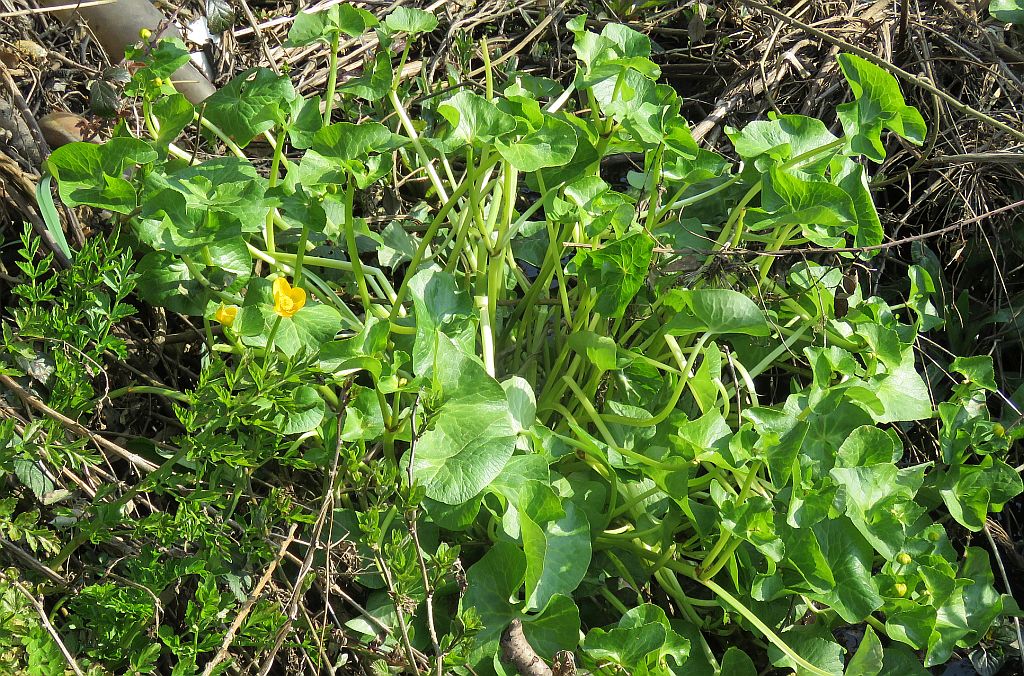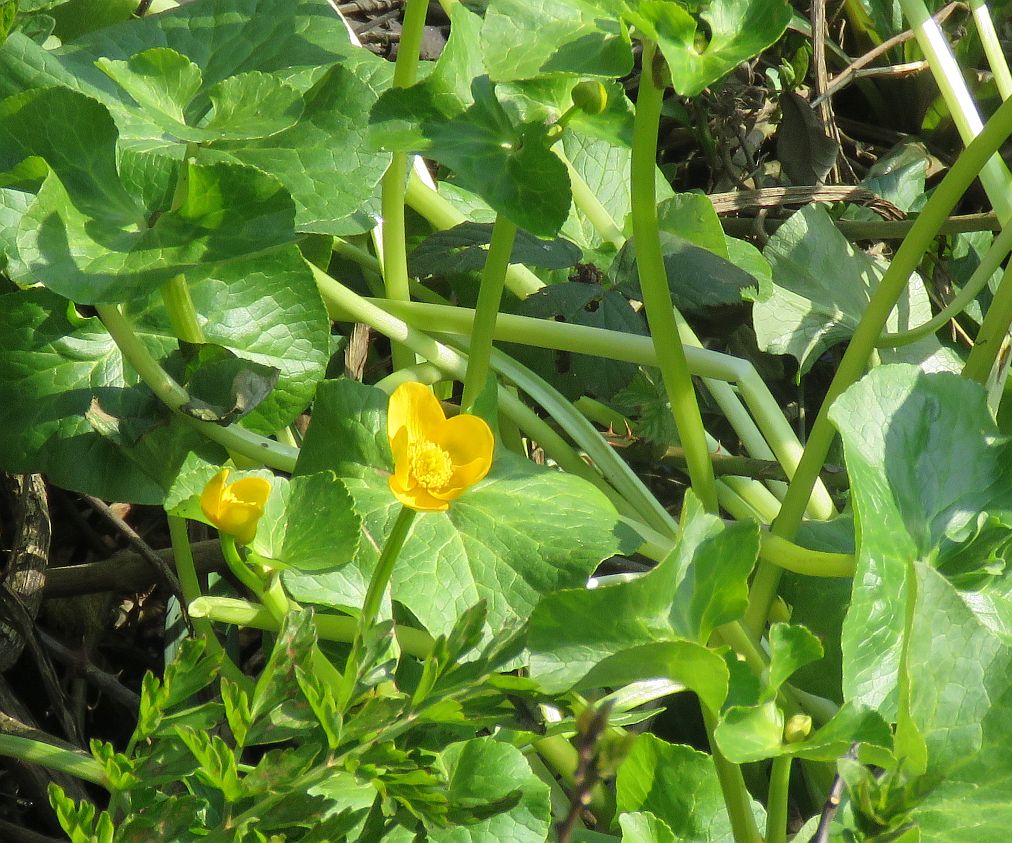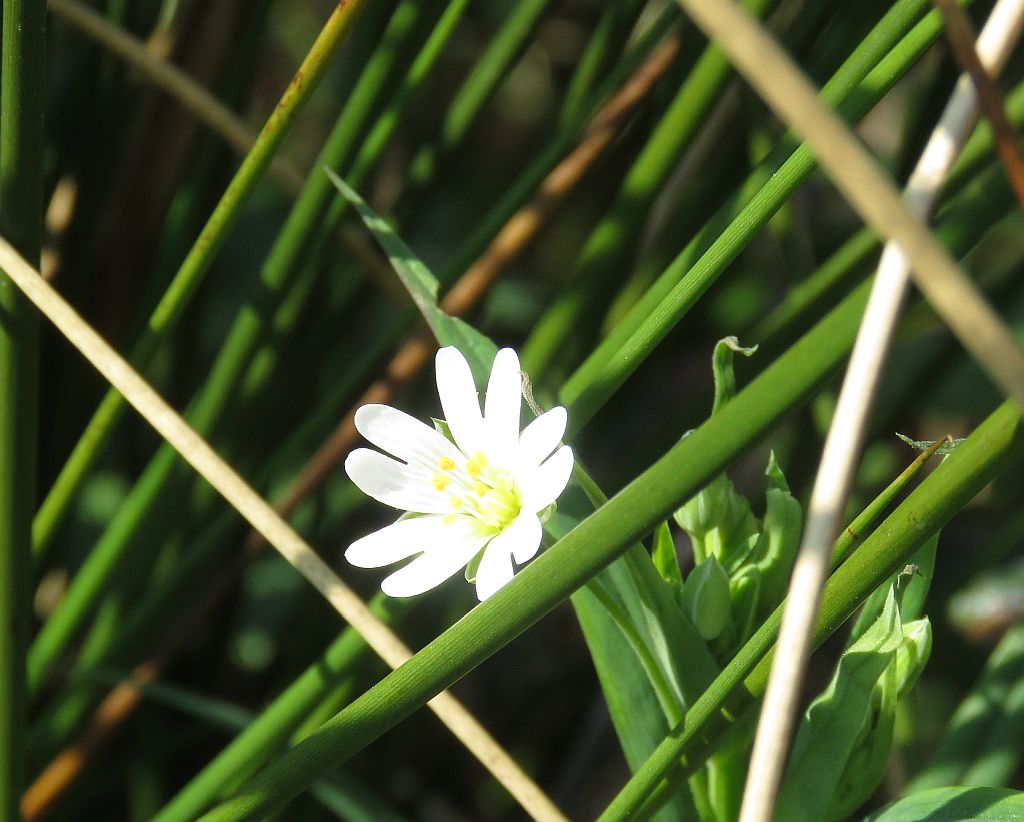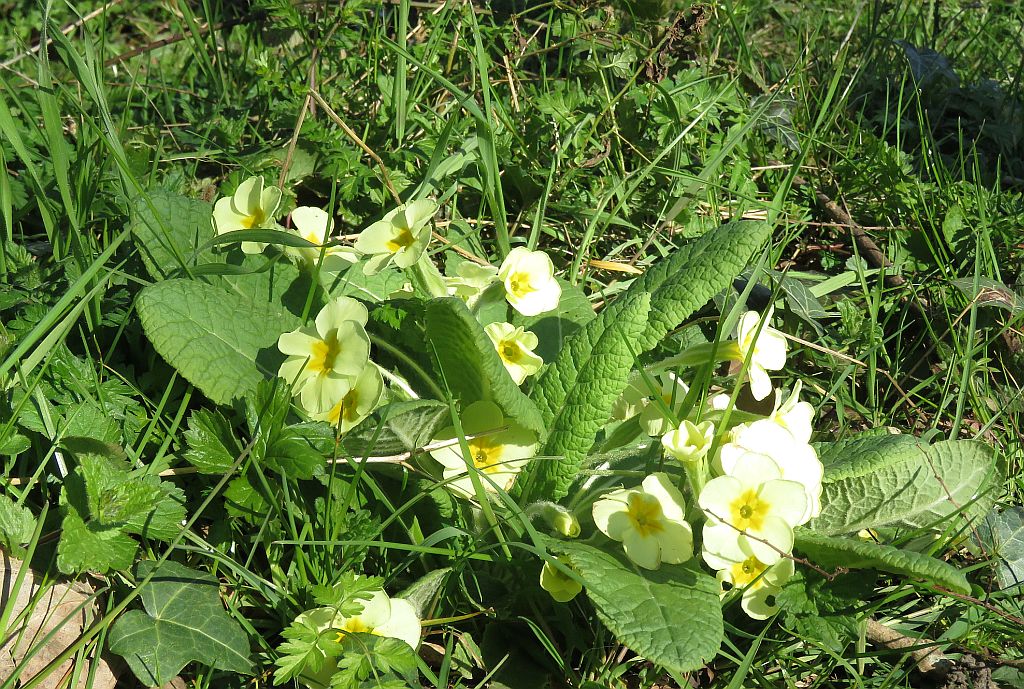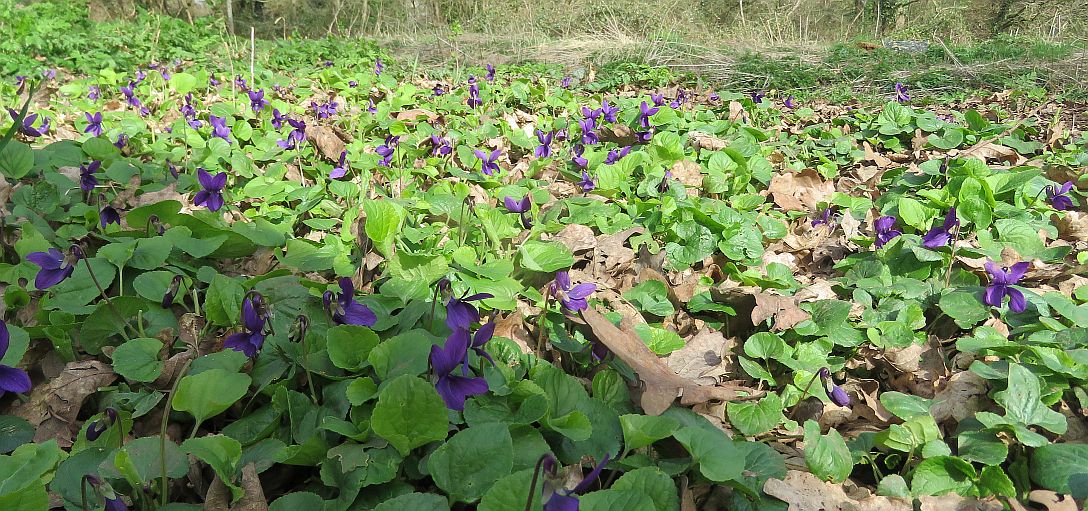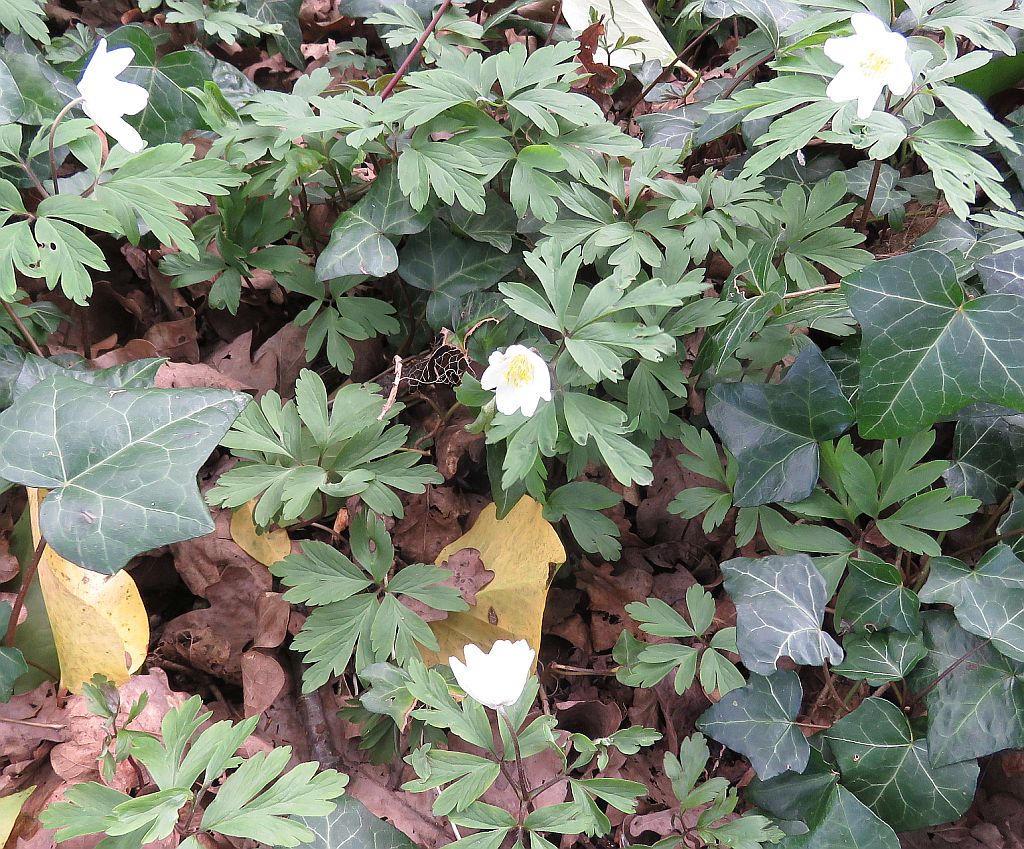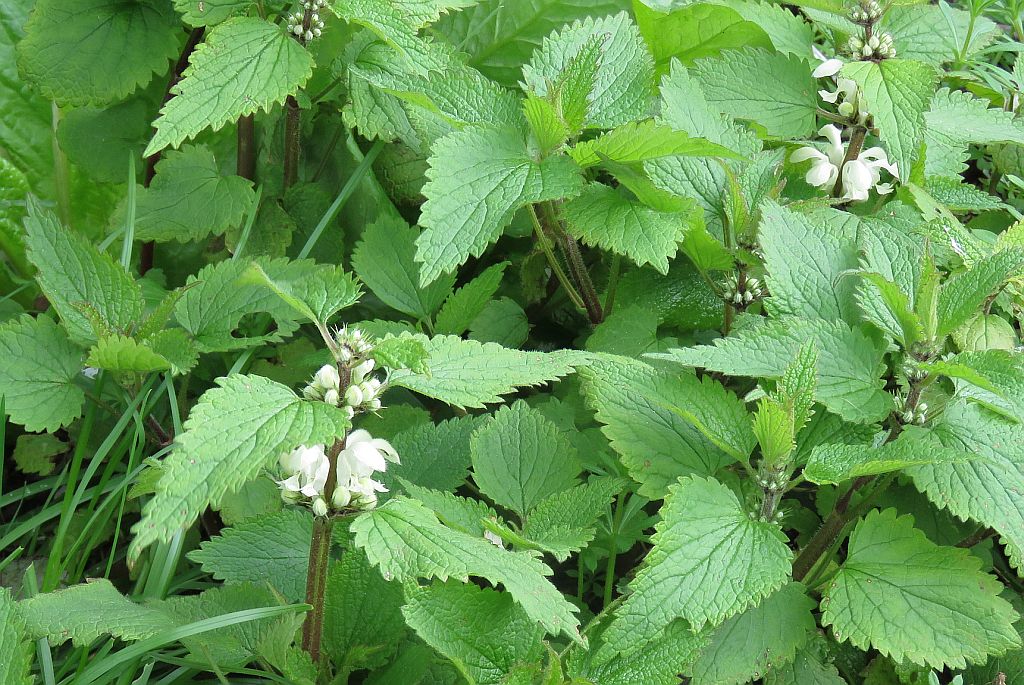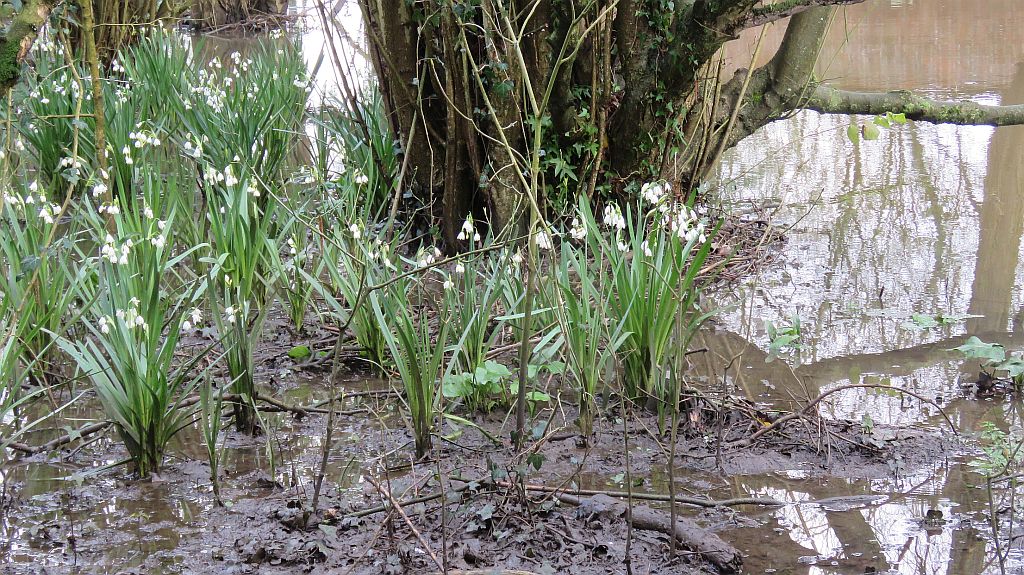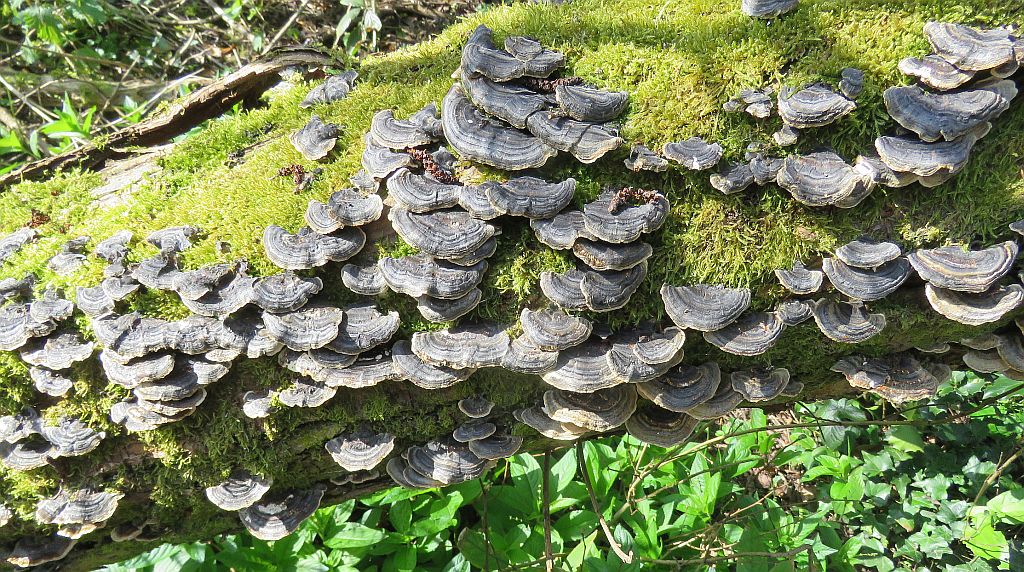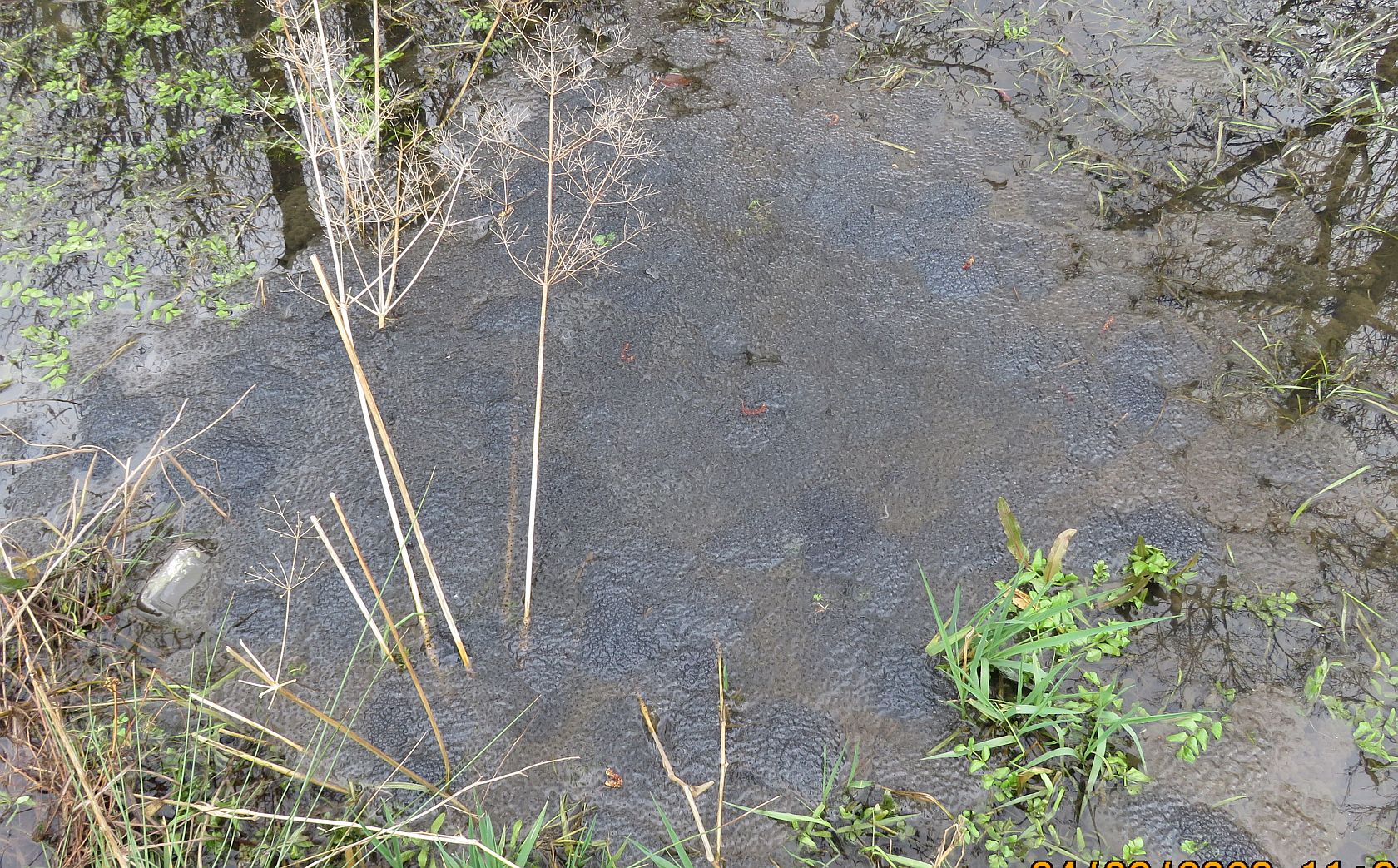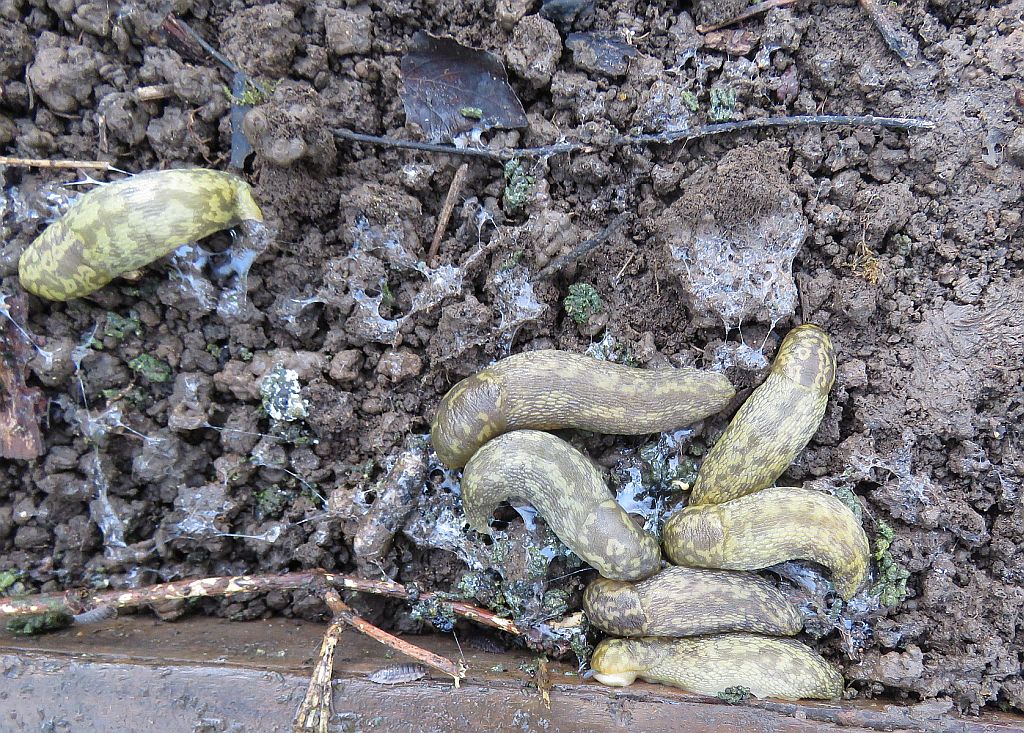Birds
31/03/20
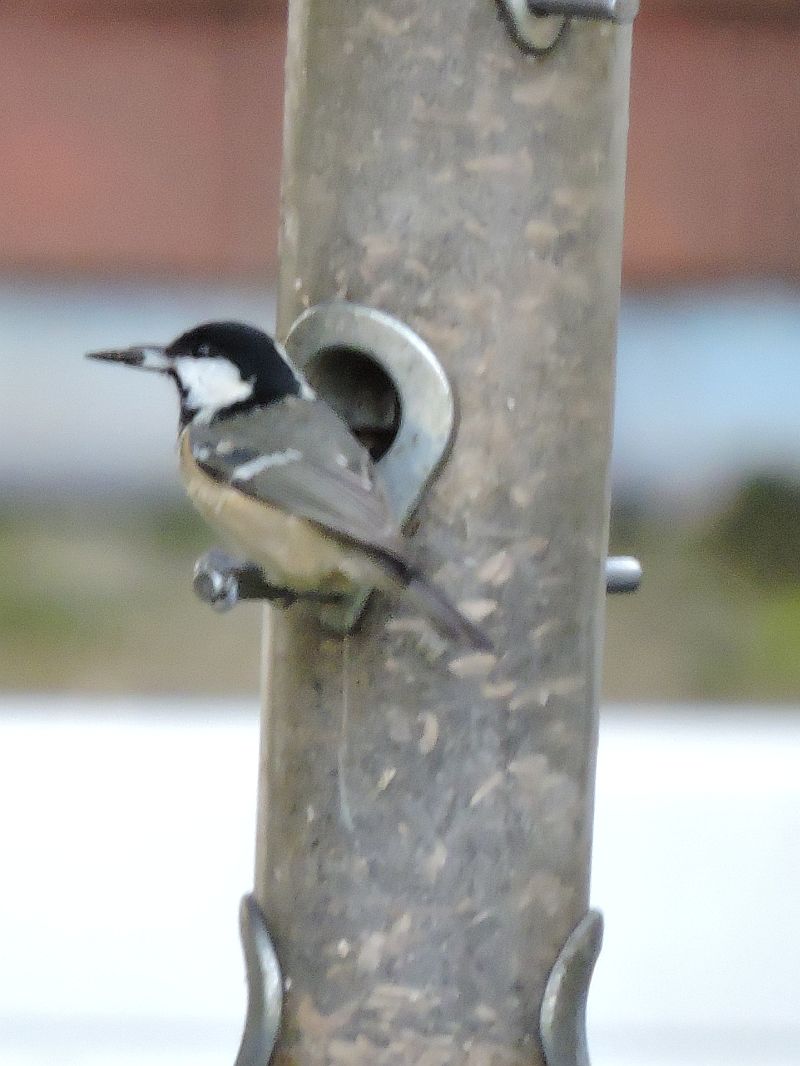 An out of focus Coal Tit was on my garden feeders this afternoon. In Area 8 at Old Forest Road Meadows Paul O'Neill saw a Little Egret in the Emm Brook. 2 Song Thrush feeding on the footpath and 3 singing Chiffchaff . A further 2 Chiffchaff and a Song Thrush were seen in Emmbrook Walk (Area 7).
An out of focus Coal Tit was on my garden feeders this afternoon. In Area 8 at Old Forest Road Meadows Paul O'Neill saw a Little Egret in the Emm Brook. 2 Song Thrush feeding on the footpath and 3 singing Chiffchaff . A further 2 Chiffchaff and a Song Thrush were seen in Emmbrook Walk (Area 7).
29/03/20
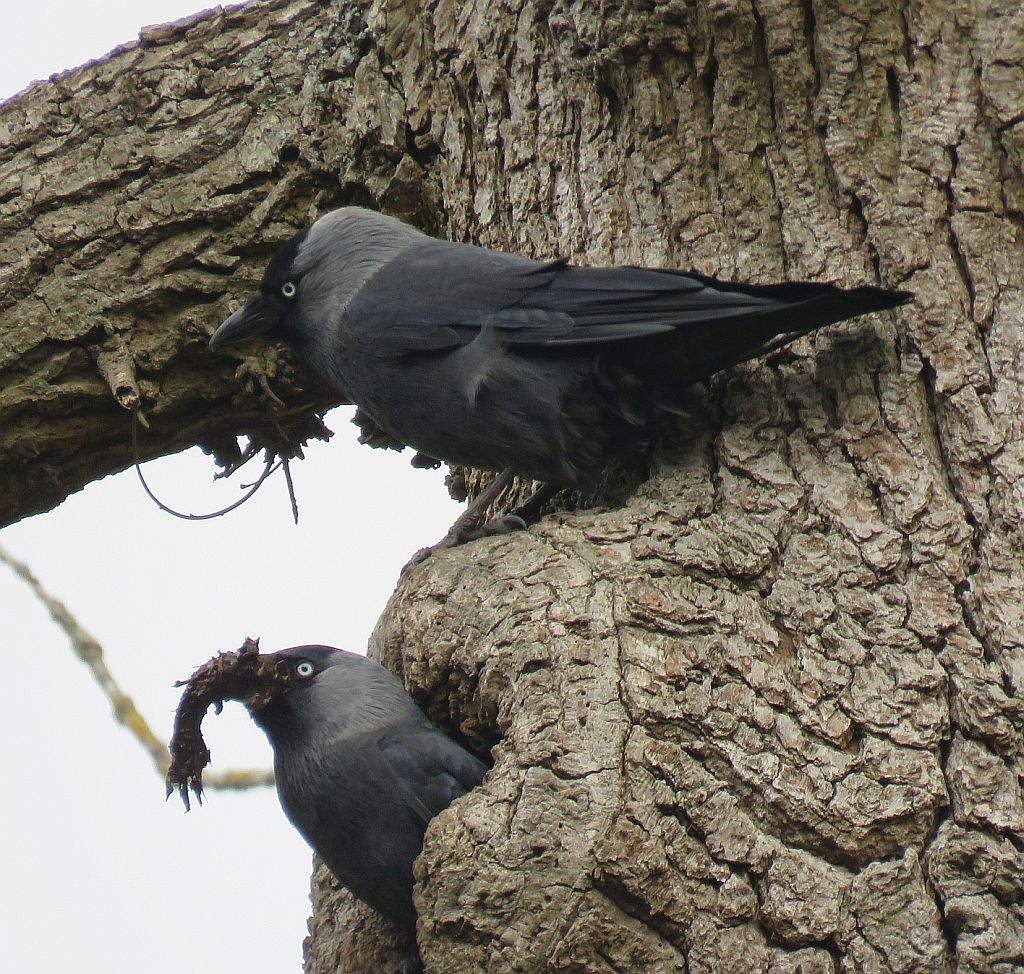 On my walk this morning in a chilly North wind around Area 1 by Ludgrove School a pair of Jackdaw were seen clearing out an old nest site of debris ready for this years tenancy.
Disaster has struck my house. The Robins nest in my Greenhouse appears to have been abandoned overnight as no one was sitting on the nest when I looked from the house this morning with binoculars. As it was positioned quite low I can only assume that the sitter has fallen foul of the neighbourhood cats that visit my garden.
On my walk this morning in a chilly North wind around Area 1 by Ludgrove School a pair of Jackdaw were seen clearing out an old nest site of debris ready for this years tenancy.
Disaster has struck my house. The Robins nest in my Greenhouse appears to have been abandoned overnight as no one was sitting on the nest when I looked from the house this morning with binoculars. As it was positioned quite low I can only assume that the sitter has fallen foul of the neighbourhood cats that visit my garden.
28/03/20
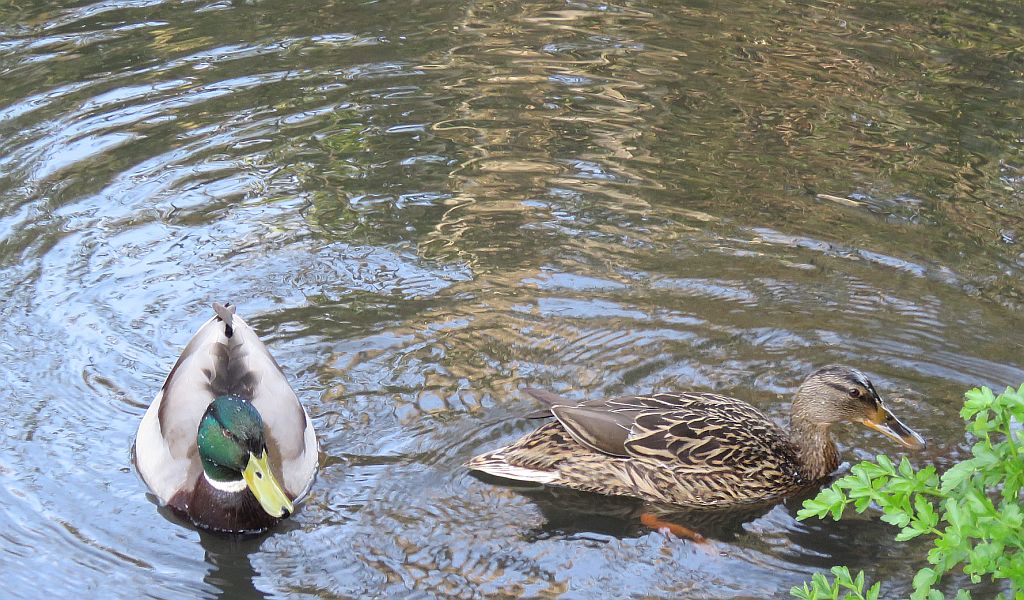 In Area 1 seen by Mark Callaghan from the footpath adjacent to Ludgrove School were 3 Ring-necked Parakeet . In Area 5 a pair of Mallard were on the pond.
In Area 1 seen by Mark Callaghan from the footpath adjacent to Ludgrove School were 3 Ring-necked Parakeet . In Area 5 a pair of Mallard were on the pond.
27/03/20
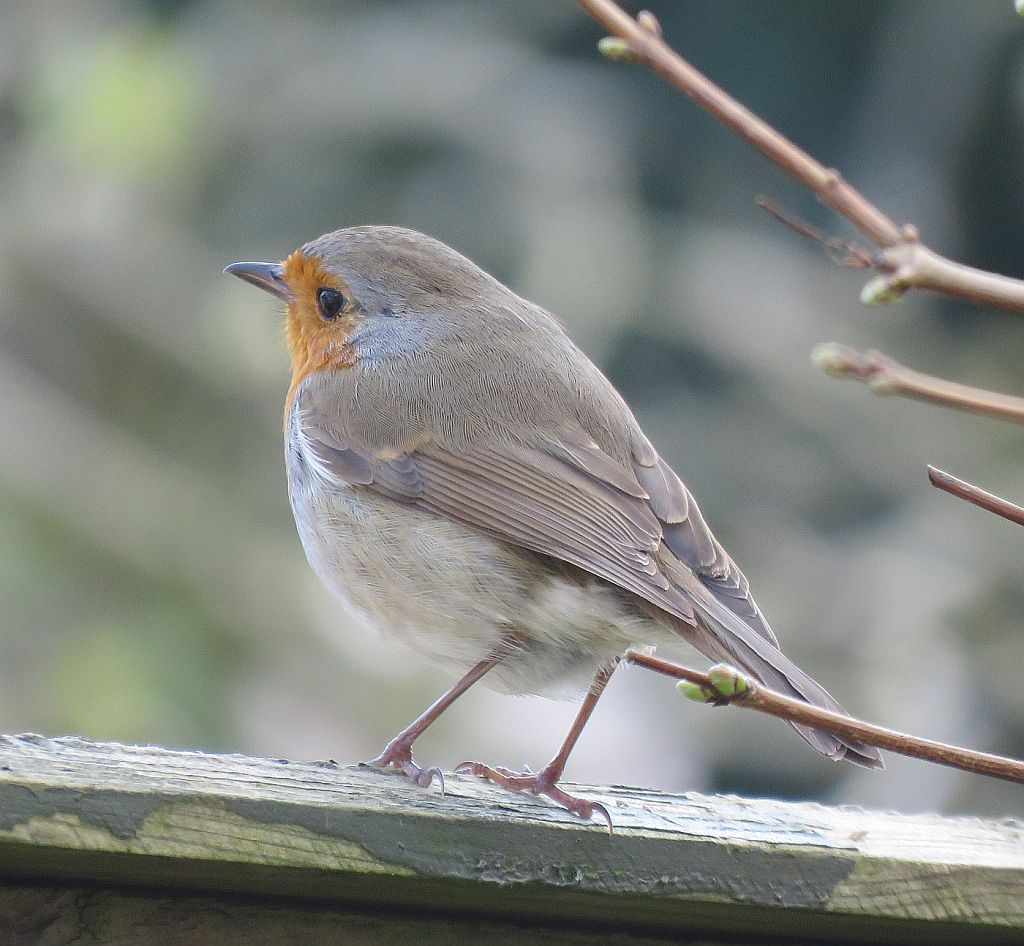 One half of the dynamic duo of Robin nesting in my greenhouse.
One half of the dynamic duo of Robin nesting in my greenhouse.
26/03/20
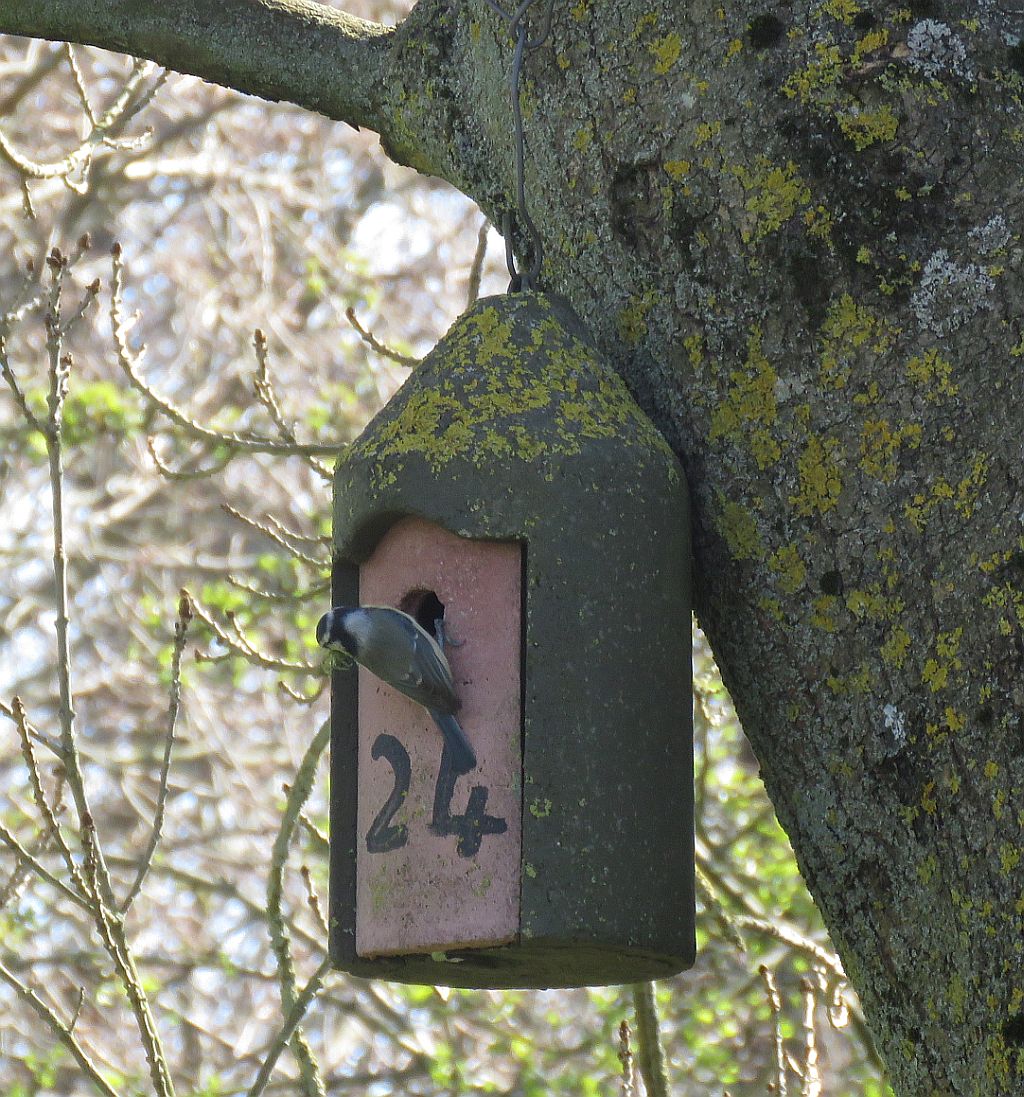 During my one a day walk I visited Areas 7 & 8. By the bridge,over the Emm in Area 7 nest box 24 was being visited by a moss gathering, nest building Blue Tit and as they say what goes in must come out.
During my one a day walk I visited Areas 7 & 8. By the bridge,over the Emm in Area 7 nest box 24 was being visited by a moss gathering, nest building Blue Tit and as they say what goes in must come out.
 Chiffchaff were singing at numerous locations, and a solitary Blackcap was heard.
Chiffchaff were singing at numerous locations, and a solitary Blackcap was heard.
25/03/20
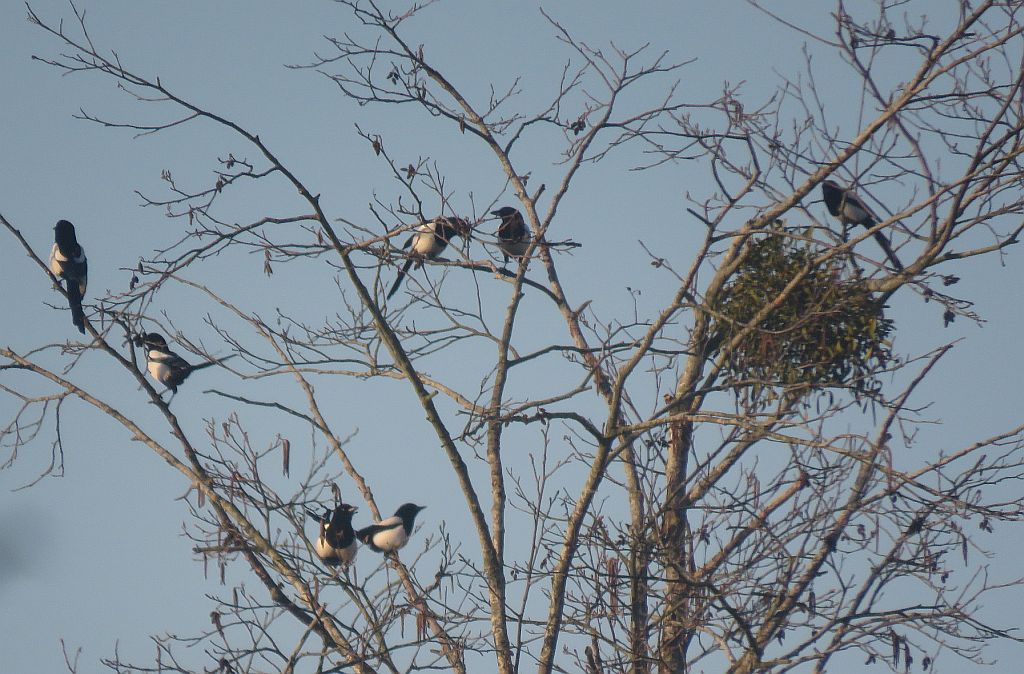 Seen from my window this morning, 9 Magpie were in the trees by the river in Area 5 .Unfortunately I only got 7 in the photo.
Seen from my window this morning, 9 Magpie were in the trees by the river in Area 5 .Unfortunately I only got 7 in the photo.
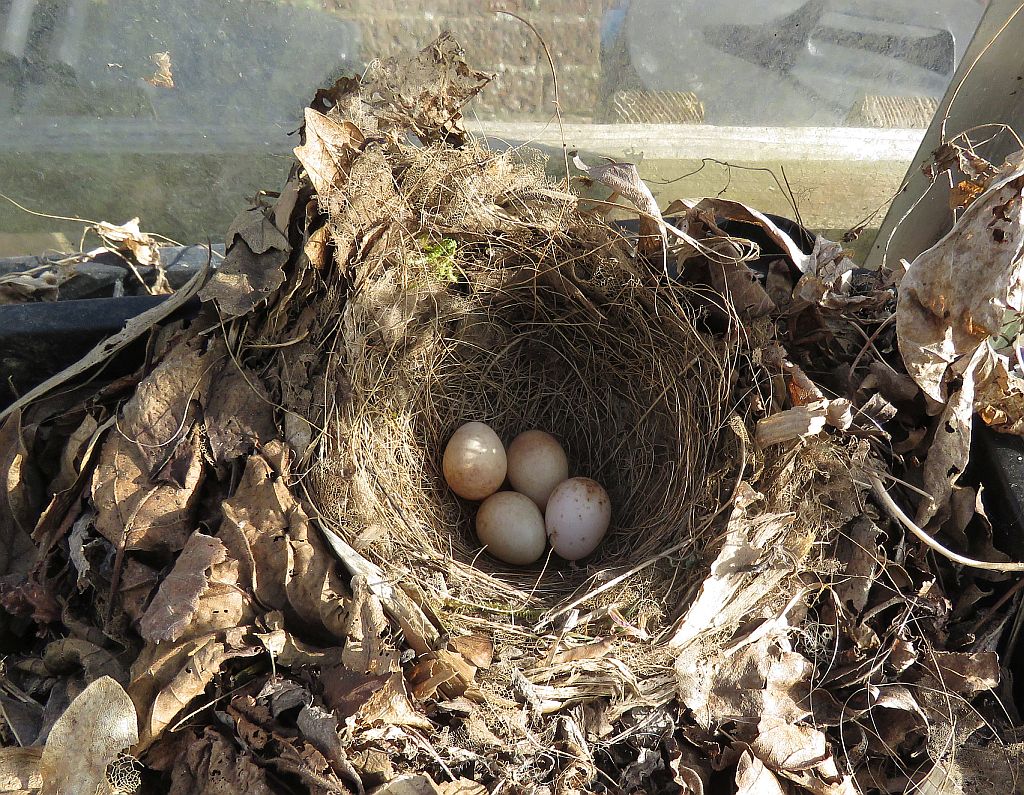 At home and looking for things to do I started to tidy up the greenhouse. I moved a bag on one of the shelves to find a Robins Nest with 4 eggs. I assumed that it was an abandoned nest from last year however on my return a Robin was sat on them. Unfortunately another job I can't now do.Flying over the Woosehill Roundabout a Grey Wagtail was calling. At the car park field in Area 10 seen by Fraser Cottington were 3 Redwing and a Fieldfare .
At home and looking for things to do I started to tidy up the greenhouse. I moved a bag on one of the shelves to find a Robins Nest with 4 eggs. I assumed that it was an abandoned nest from last year however on my return a Robin was sat on them. Unfortunately another job I can't now do.Flying over the Woosehill Roundabout a Grey Wagtail was calling. At the car park field in Area 10 seen by Fraser Cottington were 3 Redwing and a Fieldfare .
24/03/20
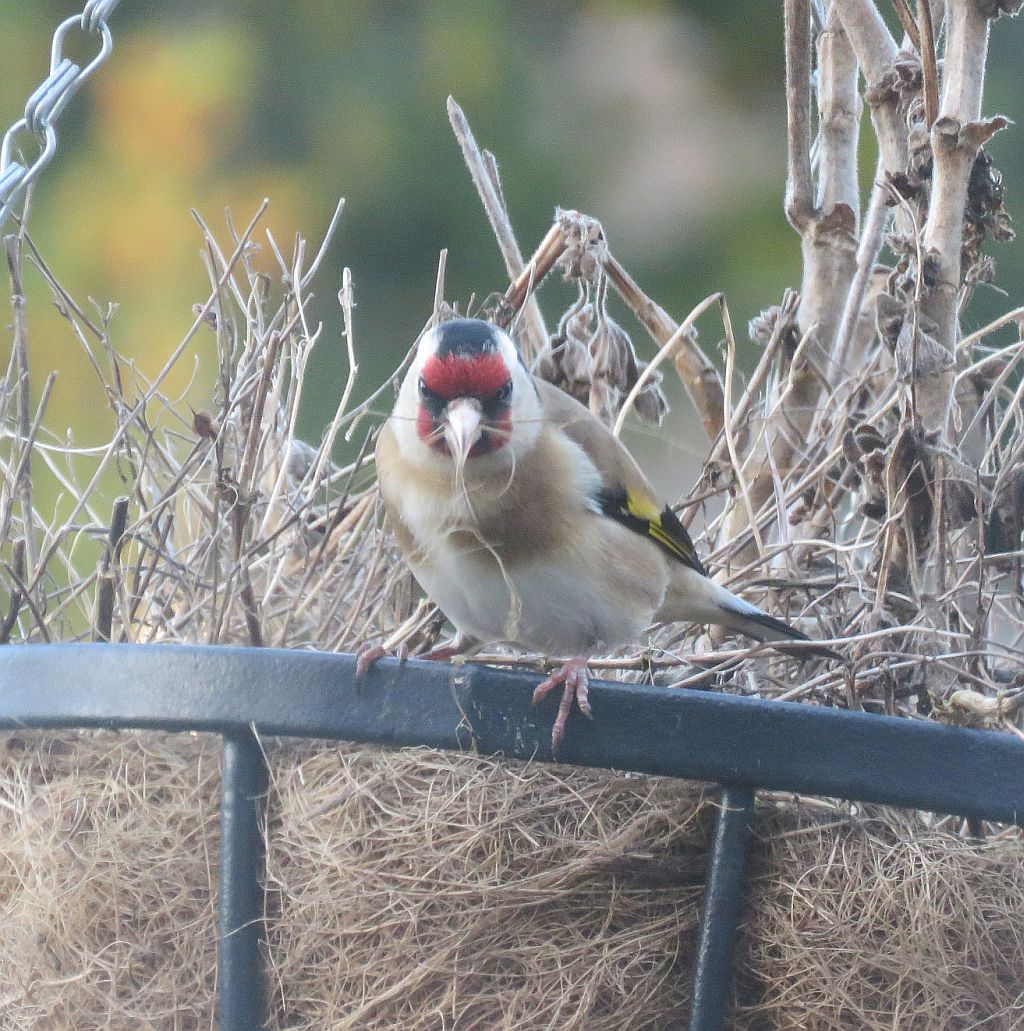 At 06:30 in my garden, 4 Goldfinch visited the hanging basket liners to pick off loose fibres. Nest building on the way?. Life for them goes on. A Jackdaw also unexpectedly appeared on the bird table. Putting out the rubbish a Canada Goose flew over heading towards Dinton Pastures.
At 06:30 in my garden, 4 Goldfinch visited the hanging basket liners to pick off loose fibres. Nest building on the way?. Life for them goes on. A Jackdaw also unexpectedly appeared on the bird table. Putting out the rubbish a Canada Goose flew over heading towards Dinton Pastures.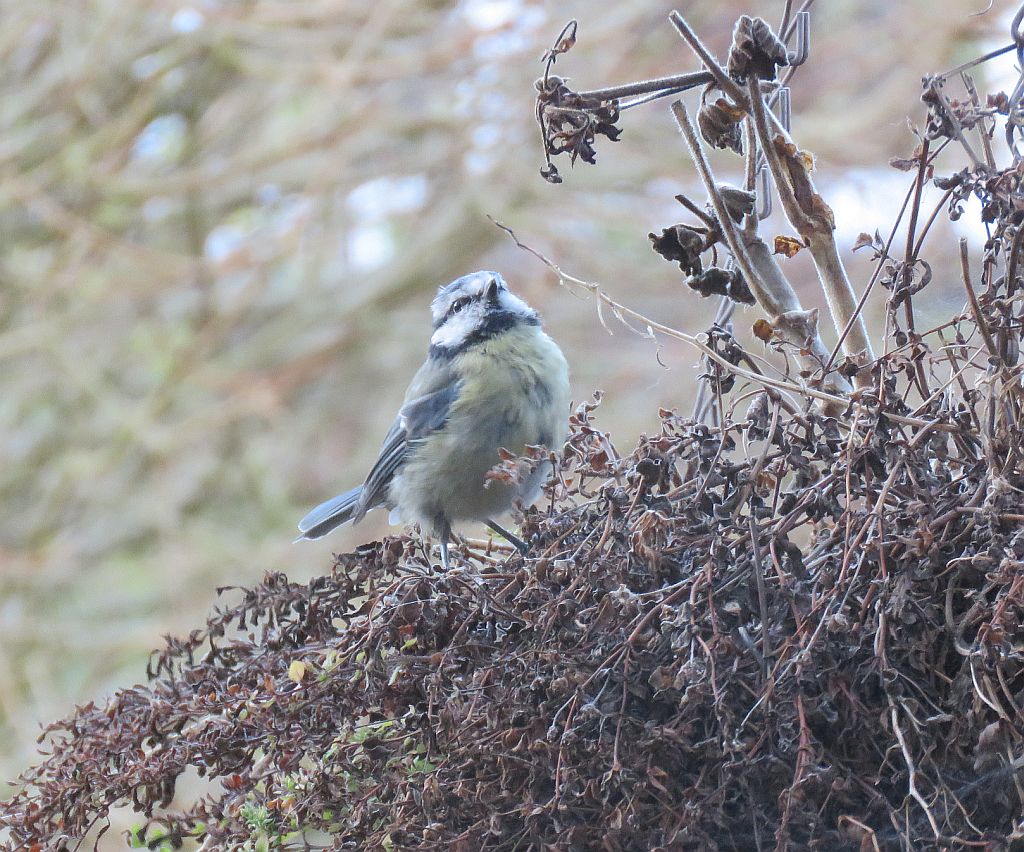 A Blue Tit was also on the baskets. In Area 4 by Kingfisher Bridge a pair of Grey Wagtail were on river bank, and a Chiffchaff was calling from the tree tops against a very blue sky.A male
A Blue Tit was also on the baskets. In Area 4 by Kingfisher Bridge a pair of Grey Wagtail were on river bank, and a Chiffchaff was calling from the tree tops against a very blue sky.A male 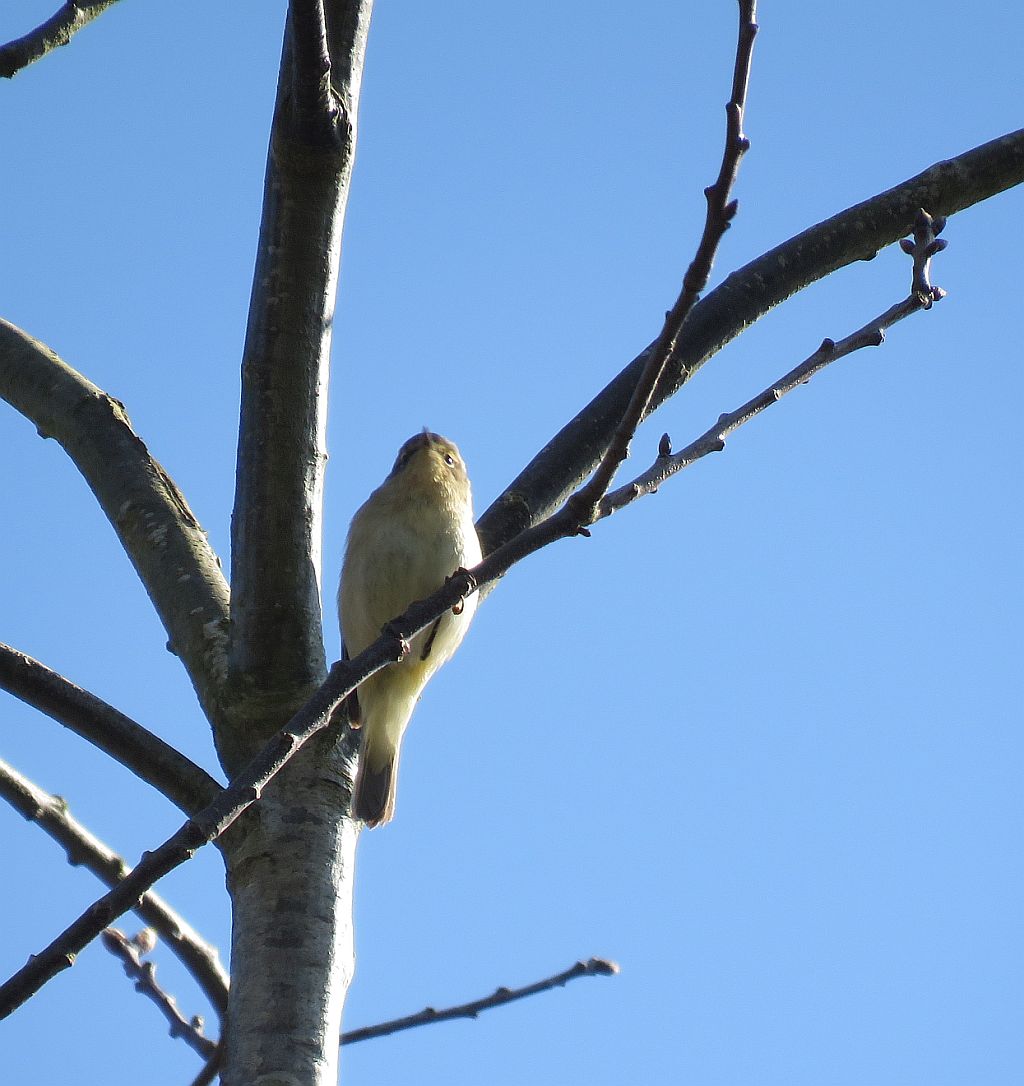 Dunnock and Wren were also singing on the Riverside bushes.
Dunnock and Wren were also singing on the Riverside bushes.
23/03/20
 My Area 5 garden feeders were visited by a Coal Tit this morning.In Area 10 a pair of Mute Swan and 2 Mallard were feeding in the Emm by the Dinton Activity centre.
My Area 5 garden feeders were visited by a Coal Tit this morning.In Area 10 a pair of Mute Swan and 2 Mallard were feeding in the Emm by the Dinton Activity centre.
22/03/20
 In Area 5 a Song Thrush was sitting on the FOTEB notice board by Dragonfly Bridge. The Great spotted Woodpecker was hammering out its prowess to impress anybody that might be listening and a Mistle Thrush was again heard with its rattling call.
In Area 5 a Song Thrush was sitting on the FOTEB notice board by Dragonfly Bridge. The Great spotted Woodpecker was hammering out its prowess to impress anybody that might be listening and a Mistle Thrush was again heard with its rattling call.
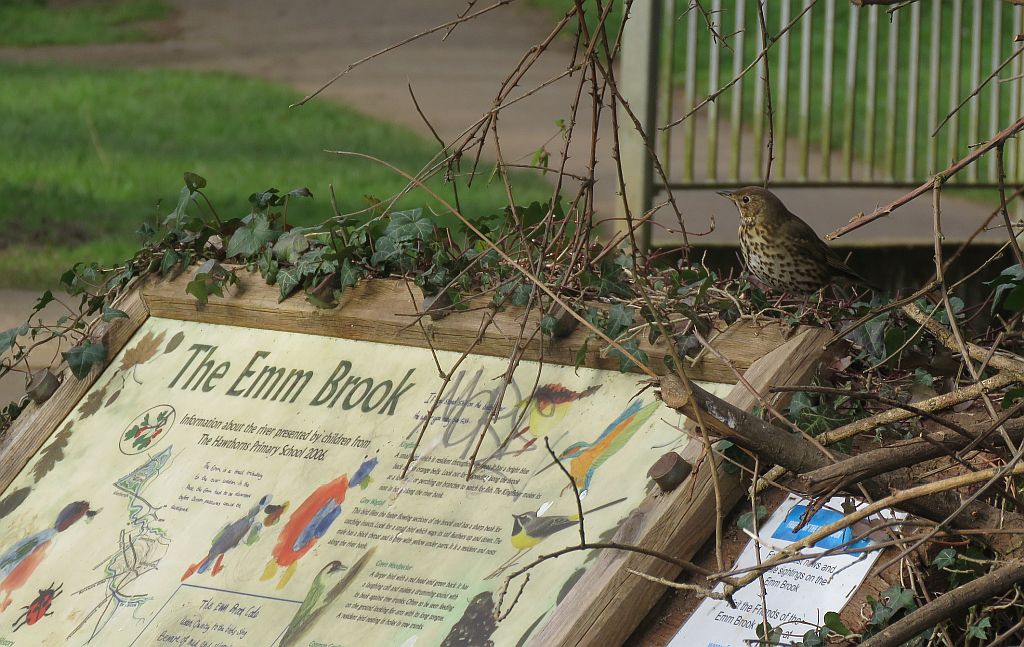 Paul Bright Thomas from his Area 4 garden is reporting Kingfisher and Chiffchaff calling along the Emm Brook near Kingfisher Bridge.
Paul Bright Thomas from his Area 4 garden is reporting Kingfisher and Chiffchaff calling along the Emm Brook near Kingfisher Bridge.
21/03/20
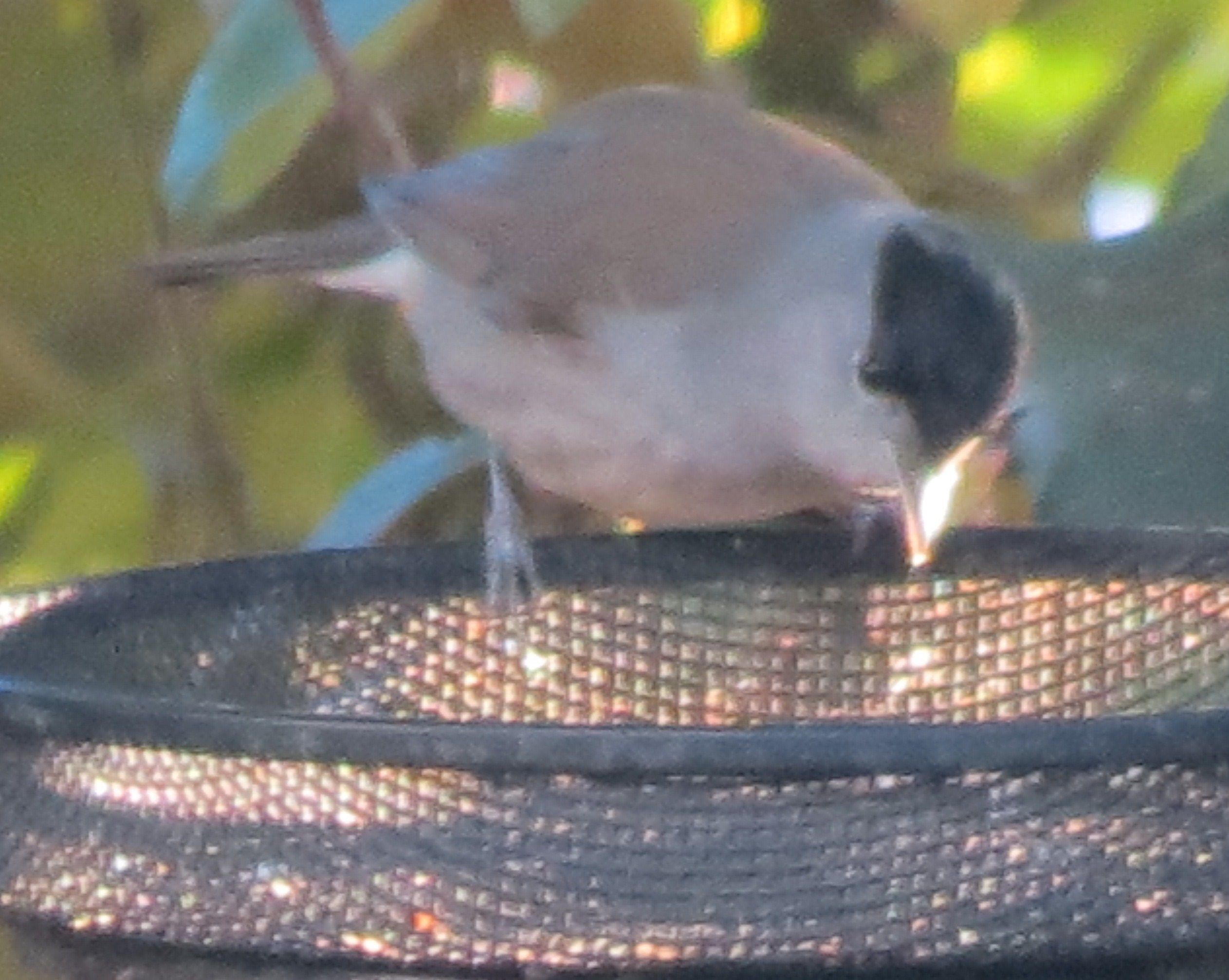 Seen by the river in Area 5 this morning on my way to get the paper from Morrisons , were 3 Mistle Thrush , a singing Dunnock and Song Thrush ,a drumming Great Spotted Woodpecker , a calling Nuthatch and a few House Sparrow . The male Blackcap was back on the Sunflower feeders this afternoon in my Area 5 garden.
Seen by the river in Area 5 this morning on my way to get the paper from Morrisons , were 3 Mistle Thrush , a singing Dunnock and Song Thrush ,a drumming Great Spotted Woodpecker , a calling Nuthatch and a few House Sparrow . The male Blackcap was back on the Sunflower feeders this afternoon in my Area 5 garden.
20/03/20
In a slightly bizarre moment at 05:00 this morning a couple of Canada Goose flew over the house and garden calling heading North into the darkness. Maybe they were on their way home after celebrating the Spring Equinox. On the feeders a bit later were a Greenfinch and a male Blackcap .
19/03/20
In and around the Area 10 car park field, 30+ Redwing , 2 singing Chiffchaff and a Bullfinch were seen by Anne Cronin.
17/03/20
Despite all that is going on in our world, the seasons are moving on, and today this was very noticeable with the the first returning Sand Martin of the year seen in Area 10 flying past at about 100ft also 2 Mandarin were seen by the Green Bridge. Both sightings by Fraser Cottington.
15/03/20
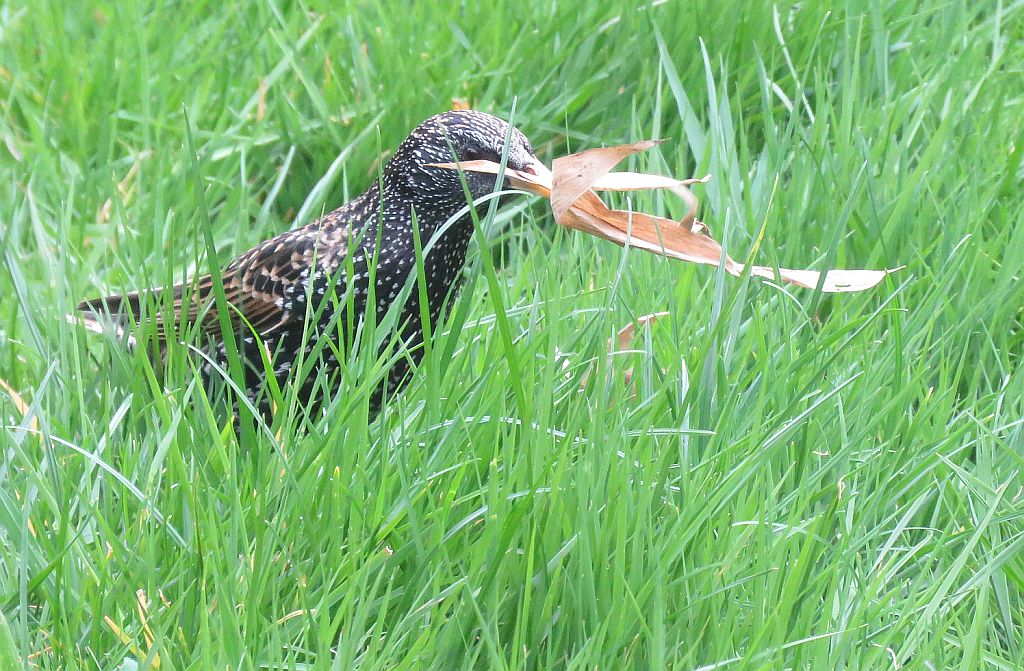 In the Area 5 jungle that is currently the back garden a Starling was gathering what I can only assume is nesting material. I must mow the lawn . but its still wet.
In the Area 5 jungle that is currently the back garden a Starling was gathering what I can only assume is nesting material. I must mow the lawn . but its still wet.
14/03/20
In Area 5, this morning a Great spotted Woodpecker was heard drumming away on a tree as if its life depended on it and 2 Canada Goose were calling as the flew over my garden.During a walk along the river a male Bullfinch was seen as were several Jay a calling Nuthatch and numerous Blackbird . In Area 10,2 Mediterranean Gull flew over the car park field heading west seen by Fraser Cottington, a calling Raven flew over the Dinton Activity Centre Car Park seen by Alan Rymer and later a Chiffchaff was calling from a tree near the boat compound.
13/03/20
The Barn Owl was seen again at the entrance to the box in the Wet Meadow in Area 10 by Anne Cronin.
12/03/20
I was stood by Dragonfly Bridge in Area 5 this morning, when a Kingfisher flew downstream calling before alighting on a branch over the river.
11/03/20
A Raven was seen flying over the Car Park Field in Area 10 by Tim James.
09/03/20
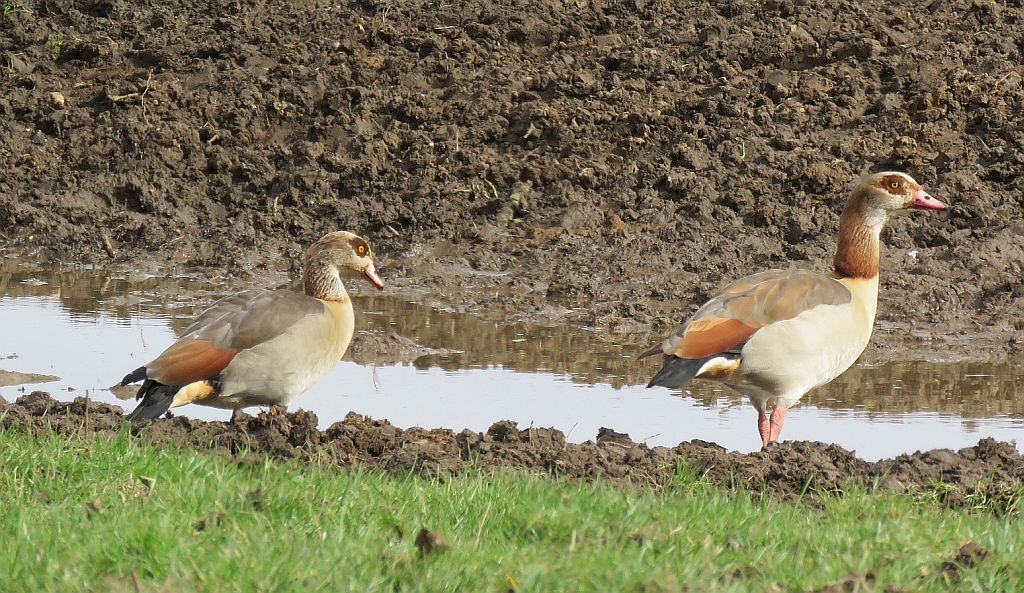 2 Egyptian Goose were drinking from the puddles in the fields around Chapel Green in Area 1. In Area 10 a solitary Skylark was seen on the landfill by Geoff Emmett, 9 Redwing were in the Car Park field, a Siskin flew over and a
Chiffchaff was still singing near the big Hawthorn, sightings by Fraser Cottington.
2 Egyptian Goose were drinking from the puddles in the fields around Chapel Green in Area 1. In Area 10 a solitary Skylark was seen on the landfill by Geoff Emmett, 9 Redwing were in the Car Park field, a Siskin flew over and a
Chiffchaff was still singing near the big Hawthorn, sightings by Fraser Cottington.
08/03/20
3 Chiffchaff were seen , two were singing but highly mobile near a big Hawthorn the third was in an Ivy covered Oak on the West side of the car park field in Area 10 singing and feeding actively. 2 Raven were also seen heading west . Both sightings by Fraser Cottington.
07/03/20
 2 Barn Owl were seen in the box in Area 10 this morning and a Chiffchaff was heard singing by the Dinton Activity Centre by Les Blundell. Meanwhile in my Area 5 garden Stock Dove had joined the Wood Pigeon feeding under the feeders.
2 Barn Owl were seen in the box in Area 10 this morning and a Chiffchaff was heard singing by the Dinton Activity Centre by Les Blundell. Meanwhile in my Area 5 garden Stock Dove had joined the Wood Pigeon feeding under the feeders.
04/03/20
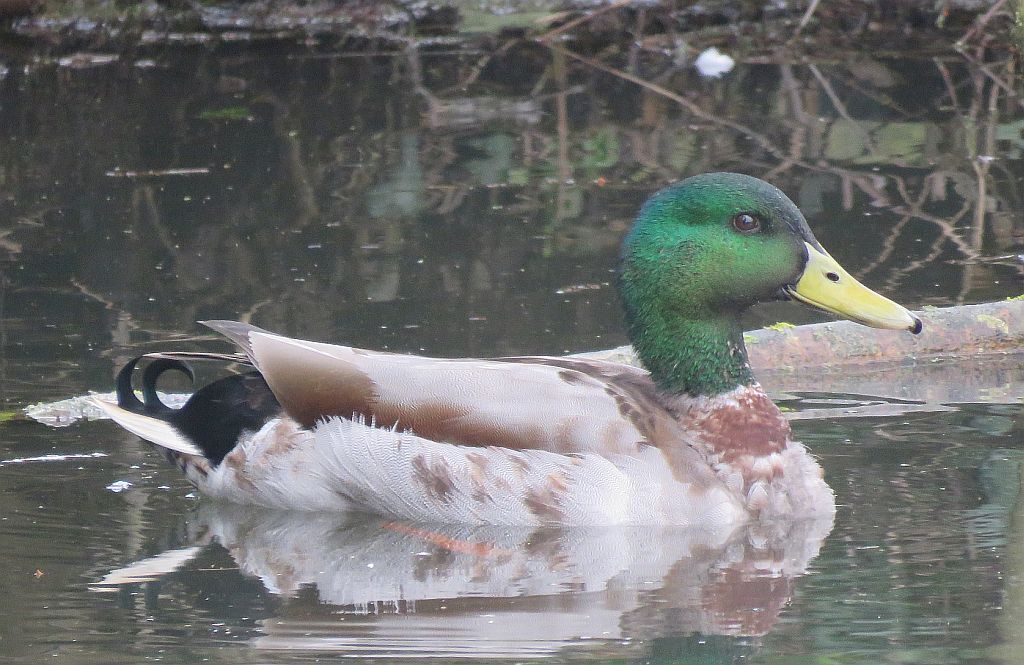 Lunchtime spent in Area 5, meant a visit to the pond where a fine looking male Mallard was on the water. Nearby were singing Nuthatch , Blackbird calling Wren and 2 Chaffinch were feeding under the trees.
Lunchtime spent in Area 5, meant a visit to the pond where a fine looking male Mallard was on the water. Nearby were singing Nuthatch , Blackbird calling Wren and 2 Chaffinch were feeding under the trees.
02/03/20
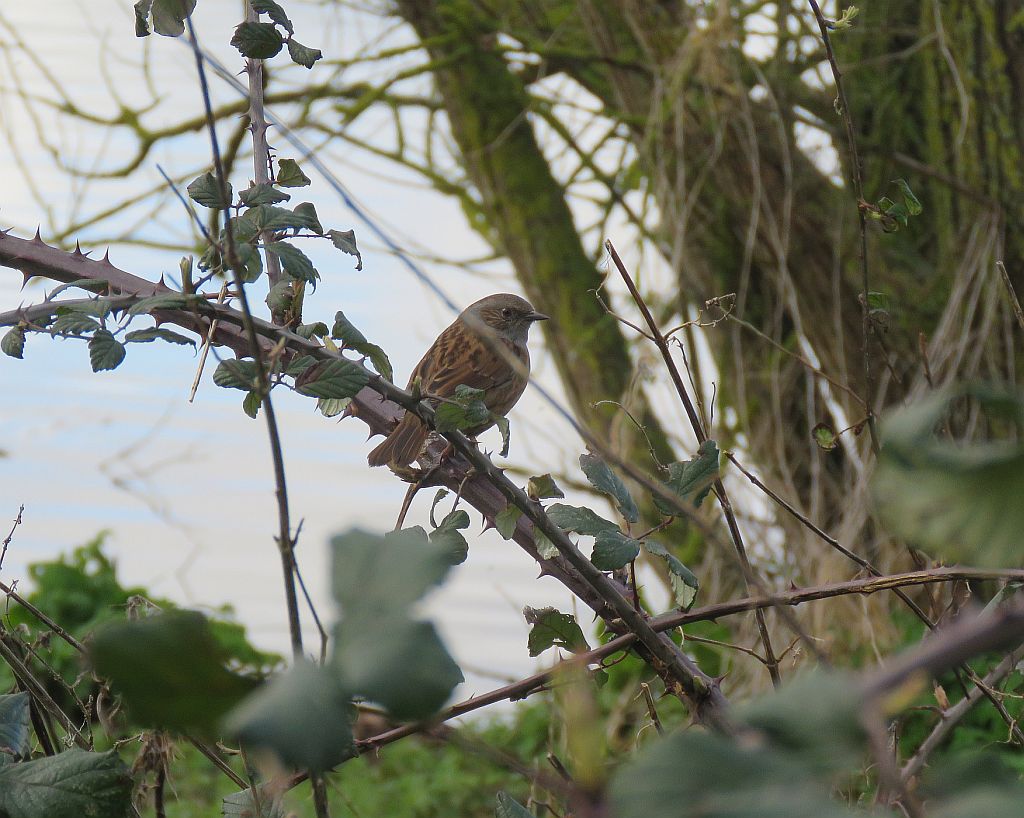 Checking river levels in Area 10, and from a Bramble bush a male Dunnock starting singing.Dunnocks are often overlooked, not only are they small, brown & grey with a slender beak, they also like to creep around under bushes.The Dunnock's song is a pleasant surprise, an unhurried sweet warble which can be confused with the Wren or Robin, but lacks the Wren's intensity and the Robin's sweetness.
The main call is shrill, persistent "tseep", which often betrays its otherwise inconspicuous presence.
Checking river levels in Area 10, and from a Bramble bush a male Dunnock starting singing.Dunnocks are often overlooked, not only are they small, brown & grey with a slender beak, they also like to creep around under bushes.The Dunnock's song is a pleasant surprise, an unhurried sweet warble which can be confused with the Wren or Robin, but lacks the Wren's intensity and the Robin's sweetness.
The main call is shrill, persistent "tseep", which often betrays its otherwise inconspicuous presence.
01/03/20
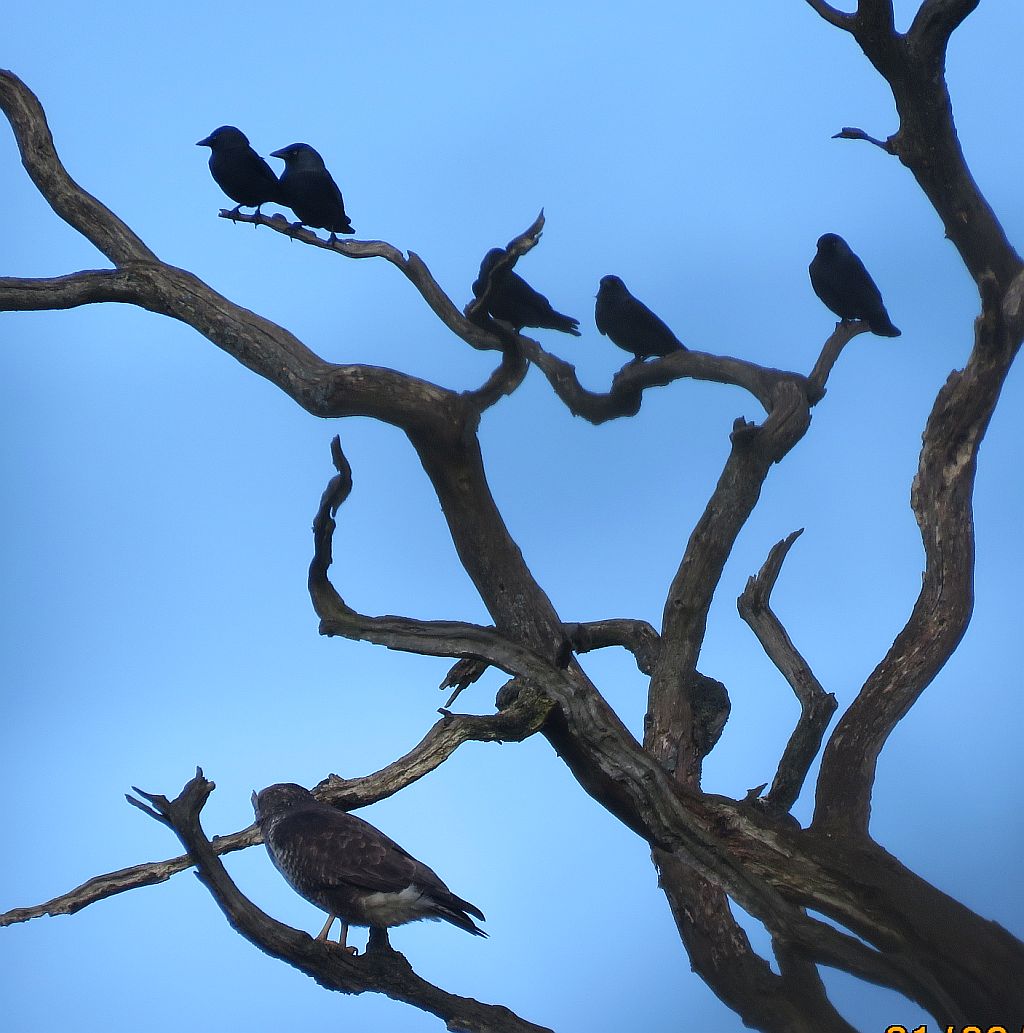 Its was very nice to see a male Blackcap feeding on the Apples that I had placed out in my Area 5 garden.Probably not a migrant but one that has overwintered. In Area 1 late morning one of the Common Buzzard was being closely monitored by an attentive gang of noisy Jackdaw .
Its was very nice to see a male Blackcap feeding on the Apples that I had placed out in my Area 5 garden.Probably not a migrant but one that has overwintered. In Area 1 late morning one of the Common Buzzard was being closely monitored by an attentive gang of noisy Jackdaw .






















